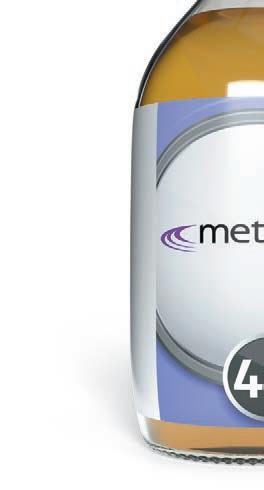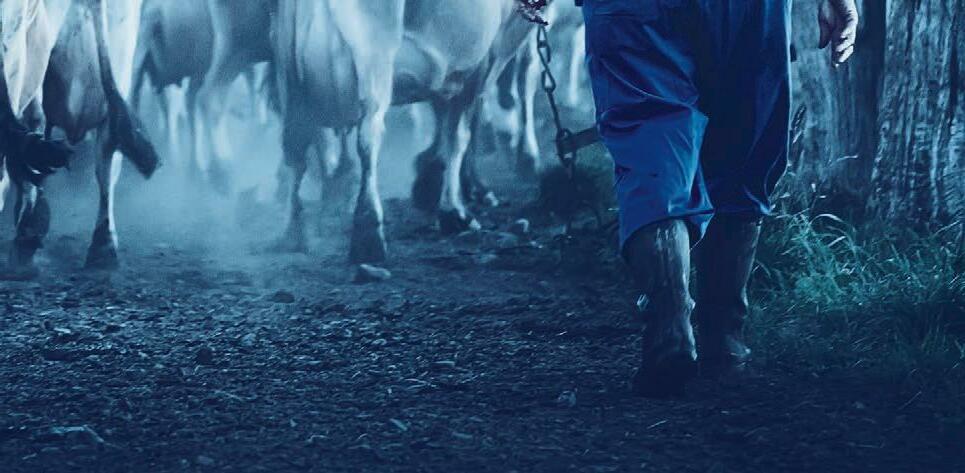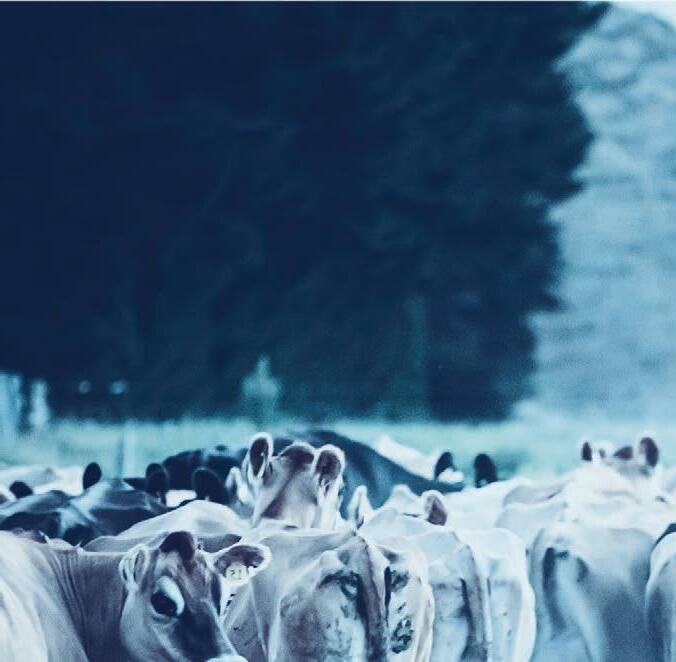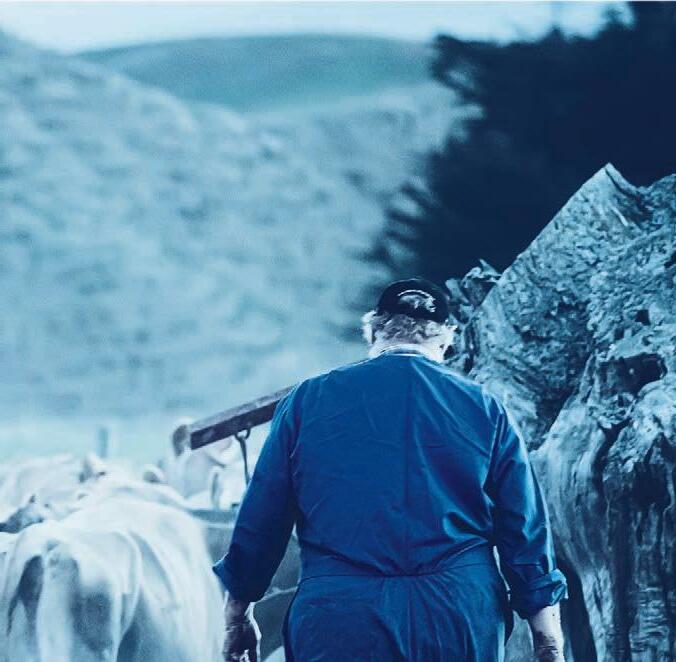Resolve pays off

Bouncing






and udderly take on anything as a dairy assistant. Learn online and take the next step.
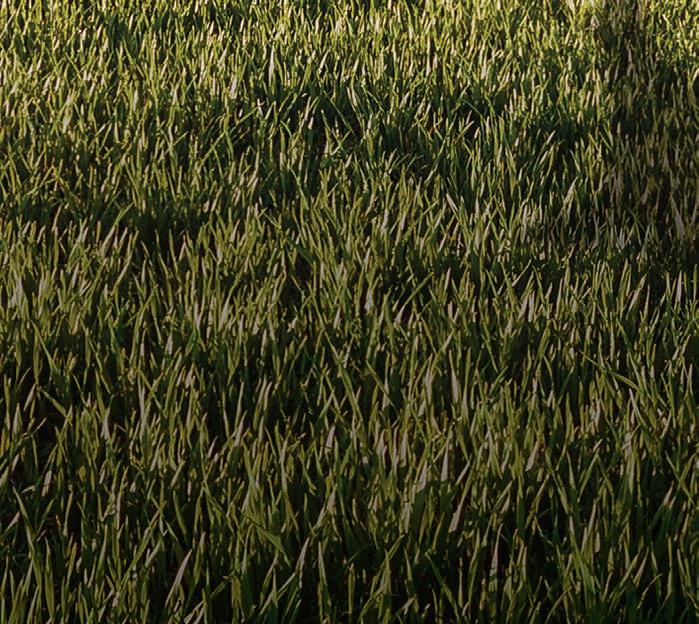
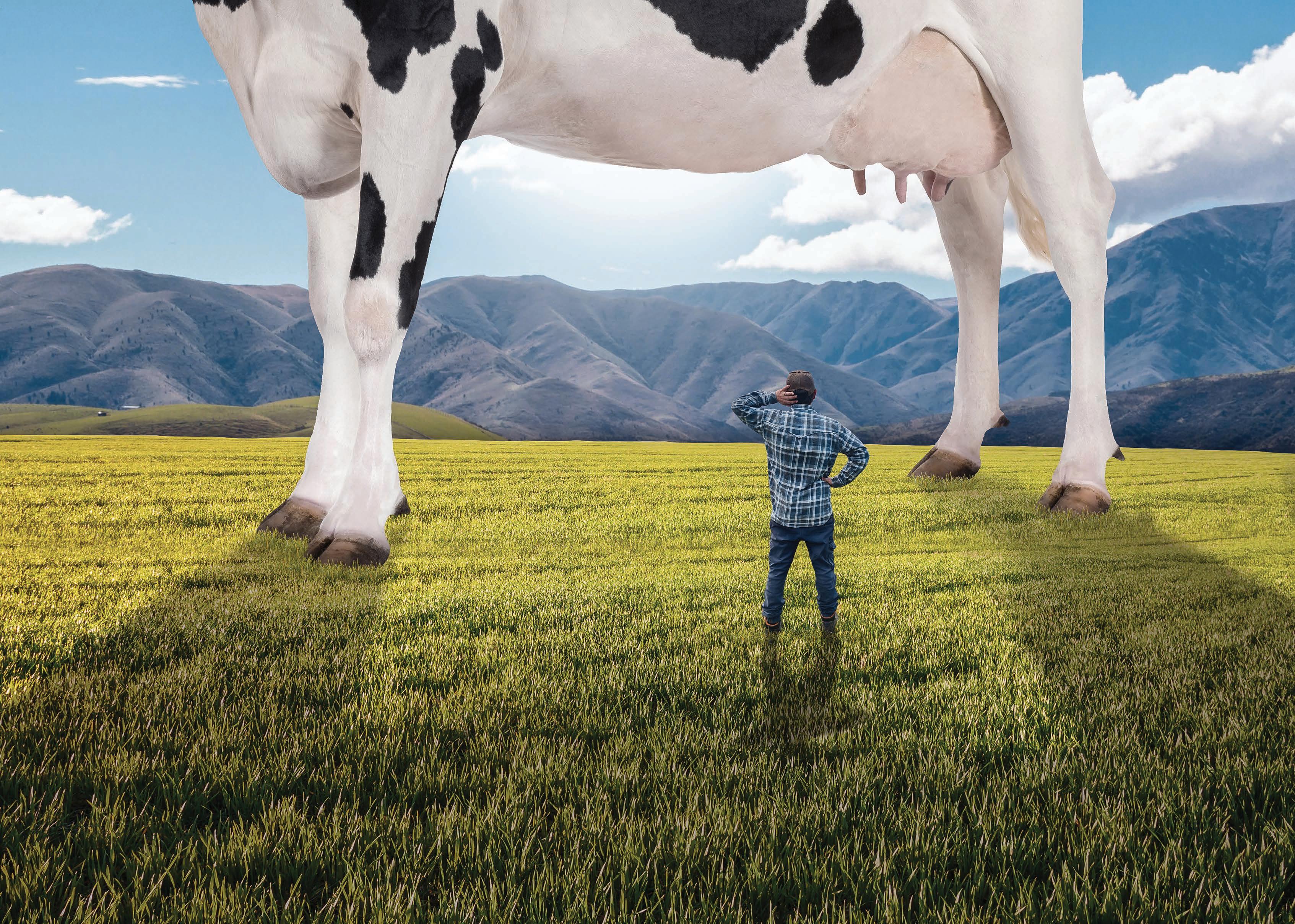


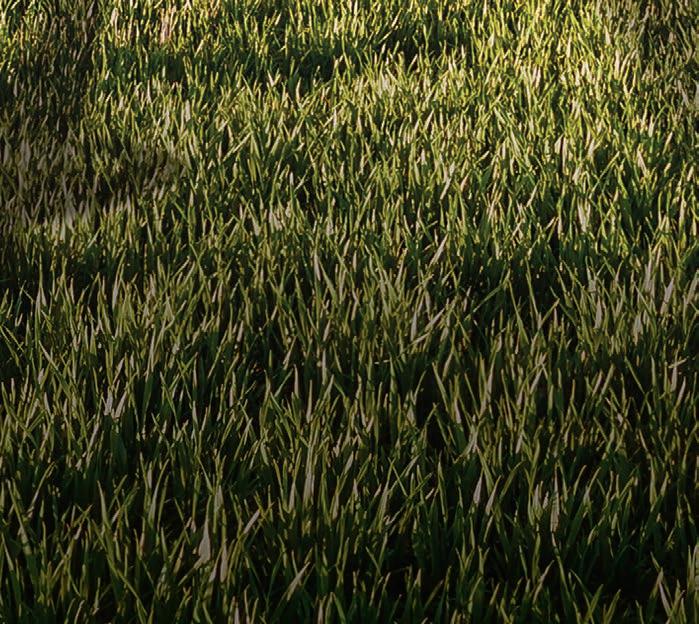

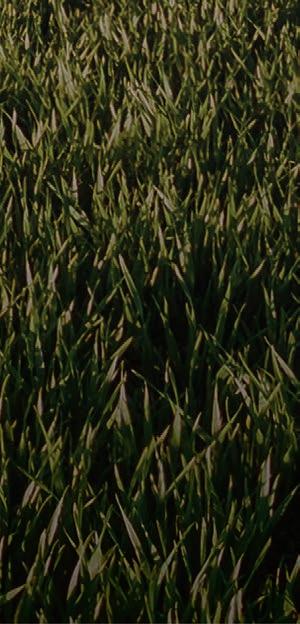
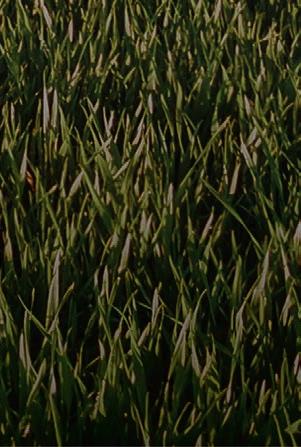
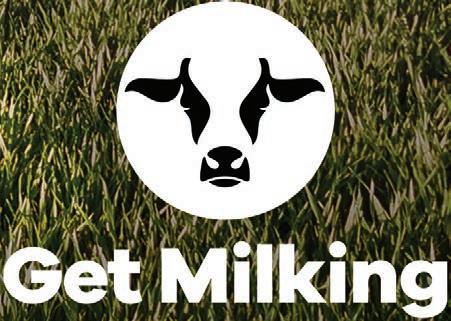
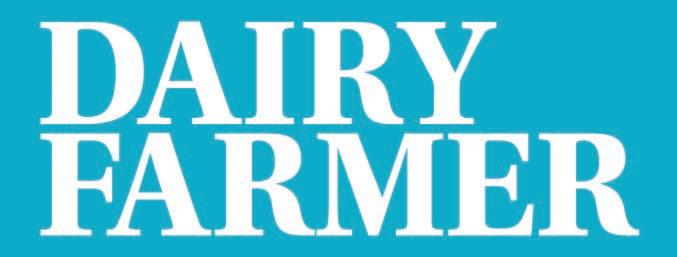





















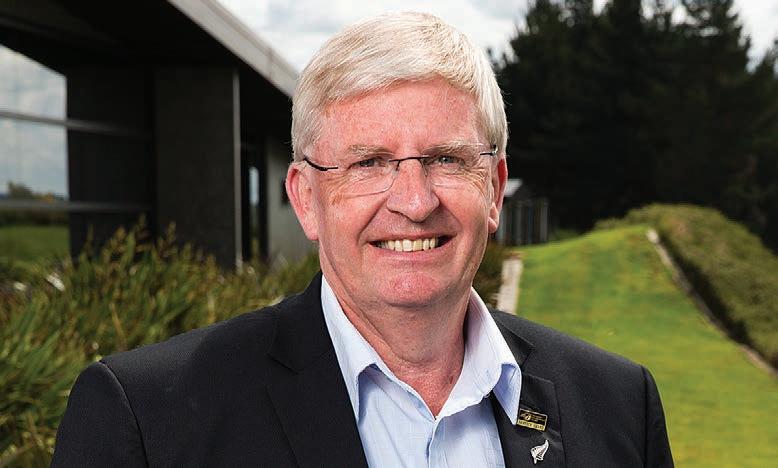
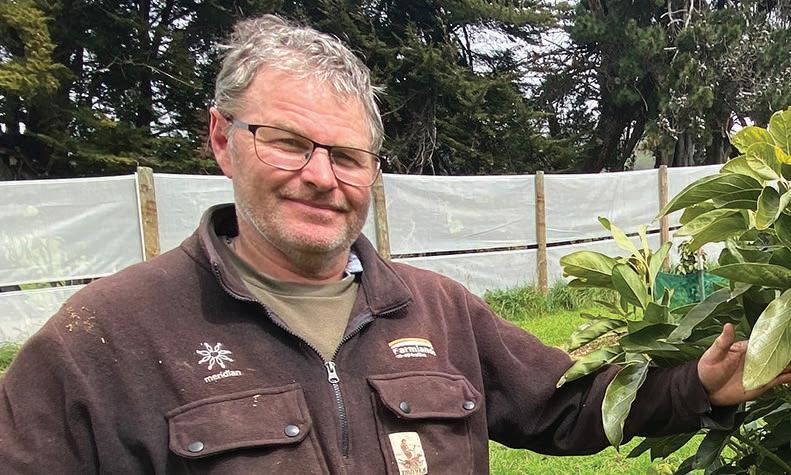
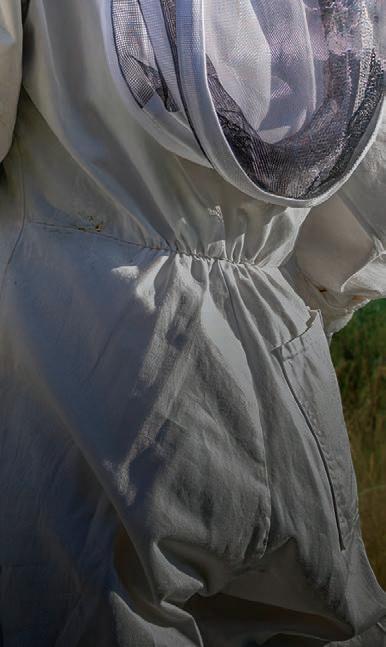
Moving ahead means making changes. And that usually comes with a few risks along the way. But with us as your partner, you can progress with more confidence. That’s because FMG offers the kind of specialised advice and knowledge that only comes from working alongside rural New Zealand for generations. To find out more, ask around about us. Better still, give us a call on 0800 366 466 or go to fmg.co.nz. FMG, your partners in progress.


We’re here for the good of the country.

Covid has played havoc with many agricultural events, including Fieldays, but after a delay, the biggest event on the farming calendar is back –this time in summer.

Fieldays is entering its 54th year as the southern hemisphere’s largest agricultural event and we’re expecting a stellar event. Like so many other organisations, we’ve had a bit of a bumpy ride in the past couple of years due to covid. Our event was threatened by restrictions on mass gatherings earlier this year, which forced us to change the date from June to November, but we are adamant that our event will still be a huge success.
This year, we have the added benefits of longer daylight hours, warmer days and best of all, increased interest from international visitors from the northern hemisphere. It’ll still be the same event, at the same location but just at a different time – same same, but different.
Having said this, visitors to Fieldays in November can expect to see some new and improved aspects of our event. This year, we will be debuting a new and enhanced careers Hub. Sponsored by the Ministry for Primary Industries, the Fieldays Opportunity Grows Here Careers Hub is aimed at people of any age who are keen to have a career in the primary sector. They’ll be able to talk to people working in primary industries such as farming, apiculture and aquaculture and get further information from the experts.
The Hauora Taiwhenua Health & Wellbeing Hub will also be much bigger, and our visitors and exhibitors will have a chance to get health advice and connect with health support groups, all under one roof. The Innovation Hub, which is always a crowd pleaser, is well supported again this year with many keen innovators entering their innovations in the annual Fieldays Innovation Awards.
We are also delighted to be opening the brand new Fieldays Forestry Hub. This will be a large-scale exhibit of the entire forestry industry, including
science, careers and the value of wood. Traditionally, sales have been strong, and buyers come from all around New Zealand. We are expecting strong numbers from the lower South Island as it has been more than three years since an agricultural event was held in that region.
This year we will be running Fieldays Online again, where we will continue to celebrate NZ food, education in the kitchen and discuss many topics that are on the minds of those in the agricultural community. So, even if you can’t physically be here, there will be ondemand footage to keep you informed.
Visitors can still expect to see their favourite exhibitors, bag a bargain, or buy equipment at our event this year but, unfortunately, some exhibitors have chosen not to attend – either because of supply chain issues, staffing shortages or
Fieldays chief executive Peter Nation says after a delay, Fieldays is back, new and improved – albeit four months later than originally planned.

the time of the year. While we appreciate that June is the preferred time for most of the agricultural community, this was not a viable solution for Fieldays this year.
We know that 2022 Fieldays will still be full of information and new technology and will allow for time away with family, friends, and trusted advisors. Covid-19 has seen people locked up for almost two years, and due to the regulations mass gatherings have not been impossible. Events like Fieldays allow people to come together to meet, talk and learn. We’ve had some great feedback, especially on our Hauora Taiwhenua Health & Wellbeing hub, which tells us that Fieldays has become an integral checkpoint on our visitors’ to-do lists. This has been great to hear as we believe that the most important asset in any primary industry is people and we’re proud to help the health of people in the primary industries in any way we can.
We’re preparing for a huge turnout at Fieldays this year so don’t miss out on tickets to the largest agricultural event in the southern hemisphere. It’s a one-off opportunity to have some fun in the sun while also enjoying the classic Fieldays atmosphere. We look forward to welcoming visitors. n
Fieldays will run from November 30 December 3 at Mystery Creek, Ōhaupō.

“This year we have the added benefits of longer daylight hours, warmer days and best of all, increased interest from international visitors from the northern hemisphere.”
Daniel and Rachel Simons have turned things around for themselves and their young family after a rough few years.
Daniel and Rachel Simons are 50:50 sharemilkers on a 220ha 400-cow farm at Midhirst, Taranaki. It’s been a bumpy ride for the couple who had to work through a financial downturn. Daniel with April, Stanley and Violet, and Rachel with Lachlan.

A couple with a love for hardy Ayrshire cattle had to work their way out of a financial squeeze.
When a Taranaki farming couple were told by their bank that there would be no more financial assistance, they could have thrown in the towel but instead turned to another bank for help. And now they’ve just bought a herd and become 50:50 sharemilkers.
Daniel and Rachel Simons are in their eighth season milking 400 cows on Rex and Janice Carroll’s 220ha farm at Midhirst.
Both hail from Taranaki. They have four children, Violet, 7, Stanley, 5, Lachlan, 3 and April, 1.
Daniel was born in Tauranga, where he lived in the family house bus and travelled around until he was five years old. He spent most of his early years near Dannevirke before the family moved to a coastal Taranaki farm when he was 14.
His mother became ill and Daniel left school to finish the last half of the season on the farm.
He moved to Bay of Plenty to work for the Animal Health Board undertaking Tb control. The job entailed trapping, and establishing how far and fast Tb was spreading. Having left school at the age of 14 without NCEA level 1, he has now completed NCEA levels 1 to 3 and recently completed an agribusiness financial management level 5 course.
Rachel grew up on her parent’s coastal Taranaki dairy farm and met Daniel at Okato’s Coastal Taranaki School. She pursued a graphic design degree. She had one year left to complete her degree
and Daniel was driving to Taranaki every weekend to see her. They decided to get back into farming and look for a farm job to give them breathing space to ponder their future.
Their first job entailed one year working as farm assistants and two seasons contract-milking 300 cows before spending one season contractmilking 370 cows on a farm at Toko in central Taranaki.
There was no wiggle room in the budget for a worker so they got up at 3.30am every morning and didn’t finish work until 7pm. The couple wanted to start a family but knew that they couldn’t do so and maintain those punishing hours.
“This farm’s consultant told us that a good job was about to come up at the Carrolls. It hadn’t been advertised and he advised us to give Rex a call,” Daniel says.
“I phoned Rex who arrived at our place within half an hour. He told us that when you catch people on the hop they don’t have time to tidy up. We passed the test and were offered the job.”
The farm was running 340 cows when the contract was signed, and then the Carrolls bought the neighbouring farm, which pushed the herd number up to 450. They’ve now reduced the herd to 400 and keep some young stock on farm. The farm has a nearby 18ha runoff.
They worked as lower order sharemilkers for the first year when that season’s payout plummeted from the previous season’s record $8.50 to $3.90. It left them wondering whether they could
• Farm owners: Rex and Janice Carroll

• Sharemilkers: Daniel and Rachel Simons
• Location: Midhirst, Taranaki
• Farm size: 220 hectares


• Cows: 400
• Production target: 185,000kg MS and an average 470kg MS per cow
recover from such a loss.
As soon as the payout dropped, their bank manager told them the bank couldn’t help them any longer and they’d have to ask the Carrolls for help with the costs.
“We told him that we’d just signed our contract and couldn’t do that. We’d take it on the chin and work our way out. We phoned another bank who agreed to help us. They put funds into our account and said that they’d sort it out
after calving. They saved us and got us through our first season,” Daniel says. They shifted to contract milking and were able to fix their financials over a two-year period.
Rachel says that their workers are worth their weight in gold and were a huge help in getting them back on their feet after the dramatic payout drop.
“When you’re in an extremely poor financial position, and have little kids, it would be so easy to throw in the towel. Having extremely good staff really brought back our passion for farming,” Rachel says.
“Poor staff ruin your mental health because you don’t want to go to work. Good staff give you time to do fun stuff, so you’re not always tied to the farm. You should never underestimate how fortunate you are to have good staff. They need a pat on the back too.”
Their love of Ayrshires came about when Daniel was out doing his AI run. He visited a farm that ran Jerseys and Ayrshires. It was a wet, windy, cold early November day and he noticed that the

Jerseys were hiding from the weather under the trees but the Ayrshires weren’t hiding.
The Ayrshires were sitting and chewing their cuds in the middle of the paddock. One was eating rushes while standing in a deep puddle. He thought “Jingoes, that’s tough.” A year later he bought three Ayrshire calves.
They operate under their stud Mossy Ayrshires.
“Our stud, Mossy Ayrshires, is named after the farm Mossy Road Trust. That name comes from a book written in the 1920s by Frank S Anthony, titled Me and Gus, which contained stories about the people living on Mossy Road,” Rachel says.
“The character Gus was based on Rex’s father and Anthony was his neighbour. Mossy Road is the name he used for Denbigh Road so as not to make the characters identifiable.”
Ayrshires are strong animals that can thrive in more challenging farming regions. They’re great foragers and converters of feed to milk. This season there will be about 70 Ayrshire cows and heifers in the herd.



They like the Ayrshires for their temperament. Ayrshires once had a bad reputation for temperament, and some of that stigma prevails, but it’s now considered to be the dairy breed with the best temperament.
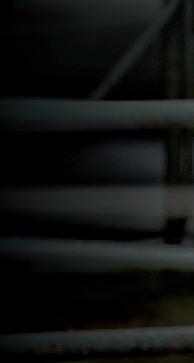
Their hardiness is also a bonus. Once, when Daniel wasn’t able to shift their calves until after lunch, the calves were bellowing at the gate waiting for their grass – except for the three Ayrshires who were standing by a post scraping off the lichen.
“They’d already eaten all of the moss off the rocks in the paddock. I immediately knew that I needed to get more of them,” Daniel says.
Easy Draft has been designed and refined over many years to be reliable, easy to use, gentle on animals and has seamless integration with CowManager. Get in contact and request a free quote today 07 280 5798 www.senztag.co.nz
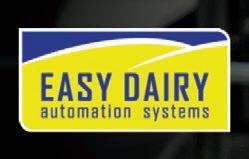

 The Simons family run Mossy Ayrshires. Their love of Ayrshires came about when Daniel was out doing his AI run on a wet windy day and noticed the Ayrshires weren’t hiding from the weather.
The Simons family run Mossy Ayrshires. Their love of Ayrshires came about when Daniel was out doing his AI run on a wet windy day and noticed the Ayrshires weren’t hiding from the weather.
“We [decided we’d] take it on the chin and work our way out. We phoned another bank who agreed to help us. They put funds into our account and said that they’d sort it out after calving. They got us through our first season.”Daniel Simons
“One day last year we had 30cm of snow. I’d put the cows into a sheltered paddock and they stood along the fence waiting to be fed or shifted. The Ayrshires were leaning over the fence eating the thorny bush lawyer hanging from the trees.”
Ayrshires have often been overlooked due to their negative BWs. A high BW Ayrshire prior to their recent revaluation was zero.
“Some cows were negative 400BW, yet their production was on a par with crossbreds. They were undervalued. The bulls weigh out well and you can achieve great hybrid vigour using the Ayrshire for a three-way cross,” Daniel says.

The farm is 1.5km from the Egmont National Park boundary and is 457m above sea level. Many creeks cross the farm and there are areas of fencedoff native bush, swamps and riparian
plantings. The farm has two large areas of QEII National Trust land and two wetlands.
The target production is 185,000kgs milksolids and an average 470kgs MS per cow on the system 2-3 farm.
“Ideally we’d do 500kg MS per cow, but we’d need 30 more days in our lactation. If we calve earlier we’d run out of grass. The grass stops growing at the end of May so if we go any later we’d run out before we even started. It’s a pretty fine balance.”
“I don’t care if a cow is 600kg or 350kg. If they both produce their bodyweight of MS, they’re good cows. Our most economical cows are the J9s. Some 420kg cows produce 500kg MS compared to some of the bigger 600kg F12 and F13 cows that produce 500kg MS,” Daniel says.

Daniel feels that this is a very good achievement considering they receive four metres of rain, snow and have a 260day lactation.
The farm uses a 40-day round and has a stocking rate of 2.2 cows per hectare. They try to keep the round as long as possible until the farm begins to grow plenty of grass. The farm has a 40-bail rotary shed with in-shed feeding and ACR. They feed 2.5-3kg of in-shed feed

Daughter April gets a bird’s eye view as she and Daniel check out the herd.

per day, mostly PKE with 10% tapioca to help bring it through the auger. This year they’ve dropped the PKE content to 60% and have added DDG and kibbled maize.
Thirty hectares of the farm and runoff is shut up for silage, which amounts to approximately 1000m3 of silage. This is about the maximum that can be utilised due to the rocks, trees or swamps in many of the paddocks.
They usually cut 400 bales of hay. Last year due to the drought, they weren’t able to make enough and had to buy hay and 80t of maize silage.
“Two years ago we trialled 7ha of turnips. We planted more last year, but when they’d got to 100mm we received 700mm of rain in 10 days. They drowned, and then the sun came out and cooked them,” Daniel says.
“About 20 plants survived. We ended up sowing some fast growing annual grass. Turnips aren’t worth the risk here; we can always buy hay or silage, or
put extra feed through the cowshed if needed.”
The in-shed feeding has helped cow flow in and out of the shed and drastically reduced lameness because there is now no need to use the backing gate.

“Lameness was the first problem we tried to solve. I would’ve looked at 100 lame cows in the first year. This year I’ve looked at one foot so far, and last year I looked at four during the entire season,” Daniel says.
“We split the herd in two so that they fit in the yard easier, and have installed a footbath that’s used three days per week. Those changes have dramatically reduced lameness.”
This year they installed automatic cup removers and that has led to a drastic improvement in teat health. Last season’s SCC was around 180,000 and the ACR installation has dropped it by 40,000. The cups now come off as soon as the cows
Fieldays at our stand G55,

The family are members of the Taranaki Ayrshire Club and have had some success showing their animals. Rachel and April with one of the kids’ show calves.
Rachel Simonsare finished milking, preventing teat damage due to over- or under-milking.

“ACR fixed our teat health issues and reduced mastitis in the herd. So far this season I’ve only had to treat nine cows.” Daniel says.
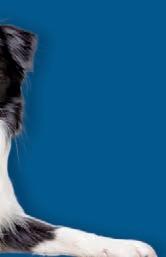
We’ve rounded up these great brands in one place.
“Poor staff ruin your mental health because you don’t want to go to work. Good staff give you time to do fun stuff, so you’re not always tied to the farm. You should never underestimate how fortunate you are to have good staff.”
This season they decided to attempt to reduce penicillin usage, so bought a Mastatest system. So far, they’ve tested 13 cows and it’s told them that three cows needed no treatment. They feel that the system will pay for itself in the first season.
One hundred cows are wintered on the runoff for around 70 days before returning to the farm to calve. The young stock are sent there if needed.
Calving begins August 7 and they only keep calves out of cows that have produced around their bodyweight of MS.
The calves are kept on the farm until May when 40 go out to grazing; the other 40-50 stay on the farm. Daniel likes to use some of the more distant paddocks as an “on-farm runoff” for them and leave the closer paddocks for the cows. If the calves start catching up to the grass
they’re moved to the runoff.
Usually, 75-80 replacements are raised, but this year they’ve decided to raise 90. The calves are collected daily unless the weather is poor, when they are collected twice daily. They receive their first drink of warm gold colostrum within an hour of arriving in the shed.
The calves receive three feeds of colostrum before going onto one feed per day as well as ad-lib meal and hay. This year they’re using milk powder for the first time.
The bigger crossbred calves are weaned at 100kg and the smaller calves at 90-95kg. They have access to the paddock from the shed after two to three days and can come and go as they please.
Last year’s 91.5% in-calf rate was the highest for four years. The six week in-calf rate is always 75%-80%. The farm used
to run bulls and had an 85%-86% in-calf rate. Daniel thinks the bulls became bored, started scrapping and stopped doing their job.
The in-calf rate went from 85% to 94% in the first year of solely using AI, tail paint and scratchies. At first Daniel thought it was a fluke but the next year’s was 93%.
“If you breed for good fertility and cull the empty cows then that’s exactly what you get. We have used CIDRs and synchronicity programmes, but I feel they were part of the reason for our poor in-calf rate,” he says.
“I think CIDRs may mess with their hormones. They cycle to the programme, and go quiet and don’t cycle again. They now hold better, which gives us a better six week in-calf rate. We often had days when 30 cows would calve. Now we get 10-12 per day, every day.”
Their goal of herd ownership began by rearing five recorded heifer calves that the Carrolls didn’t want. The Simonses reared them, sent them to grazing and sold them as in-calf heifers, and then bought 12 weaner heifers.


“The Carrolls sold stock to allow us to bring in stock. Getting to 50:50 sharemilking is such a big ladder to climb, but the Carrolls allowed us to get a foot in the door and helped us achieve that goal. We couldn’t have done it so fast without their help,” Rachel says.

They grazed those heifers off farm, artificially inseminated them and raised their calves on milk powder so it wouldn’t cost the Carrolls anything.
“We leased out those 25 heifers and
reared another 25 the following season. The next year we sold the leased cows and the in-calf heifers and bought more calves,” Daniel says.
“By doing that we were able to bring 70 heifers into the herd, have 40 yearlings out grazing and rear 40 calves. We didn’t get to 50:50 by saving a lot of money. We did it by buying five calves, selling them and buying 10, and then selling them and buying 20.”
Mating is solely AI for the 13-week mating period which begins at the end of October or the first week of November. They only use nominated sires and this year are using nine different bulls and approximately two thirds will be Jerseys. The remainder will be Friesian and Charolais. The heifers will be put to AI for six weeks before putting a Jersey bull out with them.
Sexed semen will be used over the top 100 cows, and yearlings. The bottom 50%
will go to beef to reduce bobby numbers. All heifer calves will be reared because they will be from their best cows.
“Sexed semen is used on our best cows, the rest go to beef bulls. We use beef bulls from the first week because they have a longer gestation and push calving back by five days. We’ll use short gestation bulls at the other end to bring calving forward by two weeks and give us a 10-week calving period,” Daniel says.

The first attribute they look for is capacity followed by rump width, udders and production. The herd has been bred to nominated bulls with good capacity and longevity for around 40 years.
Daniel’s favourite cows are those over 10 years old. He knows that if they’ve lasted that long in the farm’s challenging climate, they’re very good cows. They have 110 cows that are eight years old and over.
Daniel Simons“If a 13-year-old cow can do the same production as a heifer, why bring in another heifer? That cow’s done the hard yards and made money for 10 years. As long as she does better than a heifer, she can stay in the herd,” he says.
Their best Ayrshire cows are usually flushed for embryos and put into the yearlings. Last year’s hold rate wasn’t as good as they’d hoped for, so they’re holding their breath for this year’s results.
“We use ET [embryo transfer] to build up our good Ayrshire families and there are a couple of old cows that we don’t have any daughters from. Some are topproducing cows, others are good show cows that we want daughters from. If a cow is from a good family, has high production and looks good enough to show, then she’s worth flushing,” Daniel says.
They like their show animals and look forward to preparing their cows for showing and have become hooked on the event.
“The Taranaki Ayrshire Club are a great bunch of people.
“We have monthly walks of member’s farms. It gets you off the farm and socialising. Everyone helps each other out and there’s an incredible amount of encouragement given to newcomers,” Rachel says.
“Showing gets you out of the house and off the farm. When you’re showing, practice makes perfect. You’ve got to walk them, tie them up, and get them used to being in another environment, being around strangers, and fuss over them a bit.”
They took three calves to their first show and one placed second. They then took two calves to the A&P Show and won North Island Champion Junior Calf. The following year they won the twoyear-old class at the Royal Show.
Daniel and Rachel are firm believers in
“We had 30cm of snow. I’d put the cows into a sheltered paddock and they stood along the fence waiting to be fed or shifted. The Ayrshires were leaning over the fence eating the thorny bush lawyer hanging from the trees.”
The children have been getting involved in showing the calves and practise with them even when it is snowing. Violet and Stanley with their show calves.

giving everyone on the farm reasonable hours to provide a better working environment. The farm has two staff who work 11 days on and three off. This allows them to have alternate weekends off.
Daniel milks in the mornings until



6am, which allows their staff to start at 6am rather than having to get up at 4am.
He gets up at 4am, sets up the shed and milks the first herd. Their 2IC arrives at 6am to bring in and milk the second


herd. During calving their 2IC starts at 4.30am to bring in the herd while Daniel checks the springers.
“Now that’s over they start work at 6 or 7am for the rest of the season so no one gets too tired or burnt out. After Christmas we are hoping our staff can start at 7am and finish a bit earlier in the afternoon,” Daniel says.
“I love milking in the morning. I don’t like being in the shed if the sun’s up. I’d do it but I’d rather be working outside. I can take the kids with me and we can all go out on the farm together.”
When they get time off they tend to visit other farms. Daniel does a lot of hunting, fishing and camping with the kids.

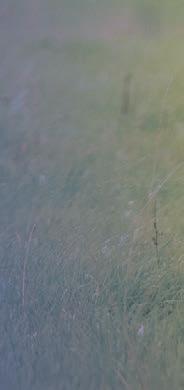
“As a family, we haven’t been on a holiday since the kids were born. The kids enjoy the outdoors. It’s nice when there’s a fine weekend and we ask them what they want to do and they want to go tramping, fishing, hunting or camping,” Daniel says.
“It’d be nice to think that in 10 years we could be in a situation where we’ve paid off the cows and in a position to maybe purchase the farm.” n






With sought-after offspring, you gain valuable days in milk, easy calving, a tighter calving period, easy-to-rear calves and a second income stream from the offspring.







Scan the QR for more information on Belgian Blue


The 2022 finalists for the Dairy Women’s Network 2022 Volunteer Regional Leader have been announced.

Kelly Bavin, a Southland regional leader; Melissa Munnik, a regional leader and hub leader in Southland; and Taranaki regional leader and hub leader Nicola Bryant are up for the coveted Dairy Women’s Network (DWN) Regional Leader of the Year award, showcasing inspirational women who demonstrate excellence at grass roots level and leadership in their local community, and encompass the DWN values.
Bavin farms near Invercargill in Southland, and is an active member of her local farming community. She is described as someone who just makes things happen, whether it’s arranging a last-minute workshop, or organising cycling events for fun, fitness, wellbeing and connection with others.
She is described as being passionate about dairy farming, with a positive outlook for the sector and in life.

Munnik farms in Otahuti in Southland and is described as having contagious optimism, supporting women around her with wisdom and encouragement to help them know their worth.
As a farmer she understands firsthand the challenges some rural women experience and as a business owner of The Wardrobe Edit she has found a unique way to support rural woman.
Bryant is a Taranaki farmer involved in a large range of community groups and activities, such as the Te Kiri Women connect group, being a PTA committee member and a trustee of the Rural Razzle Trust.
Her passion for helping kids also extends to helping form Auroa Agrikids. She’s been a mentor for Primary
ITO for seven years to “give back to the dairy sector that has given her so much”. She is described as a force for DWN in Taranaki with incredible community connections, making sure that DWN is at the forefront of everyone’s minds, “shining that big pink DWN symbol everywhere”.
Jules Benton, DWN CEO, says: “When the nominations come in, it’s always so exciting, because the calibre of woman is incredible.
Our regional leaders across New Zealand are woman who believe in helping their communities, connecting their rural networks, and supporting individuals.
They often juggle running a farm and families, and are heavily involved in their communities – and then are our regional leader: organising, attending and often inspiring events in their communities.” n


Each month the Milk Monitor delves into the dairy industry and gives us the low-down on the good, the bad, the ugly and everything in between.
What started out as a promising spring has turned into a wet slog as the persistent rain and the at times cold weather put the kibosh on production.
While soil temperatures are holding up, the lack of sunshine hours and waterlogged paddocks are holding up the spring flush, leading to Fonterra revising its milk production forecast from 1,495 million kilograms of milksolids to 1,480 million for the season.
It’s followed a trend that’s been evident since the start of the season. In August, production fell 4.9%, the lowest volume for that month in five years.
It’s the second season in a row that spring has been underwhelming. In contrast, United States milk production posted its strongest gain in 15 months in August, and European Union milk supply is showing some positive signs.
In New Zealand, the poor spring is also holding up contracting work in many places, particularly in the Central North Island where it has been too wet for tractors to cut any grass for silage – on those farms where pastures have actually grown.
This, coupled with the government’s emissions pricing plan that was released for consultation, it’s no wonder farmer confidence has barely shifted into positive territory.
That plan will see farmers report their emissions using a “calculation engine” and pay an annual split-gas levy for their methane and long-lived gas emissions.
As a carrot, they will also receive incentive payments for taking up technologies and practices that ensure emissions reductions.
Using He Waka Eke Noa’s indicative pricing of methane + nitrous oxide/ carbon dioxide minus the benefits from innovations and sequestration, AgFirst economist Phil Journeaux said that levy could be around $5817 in 2025, rising to $18,580 by 2030 based on a 133ha, 368cow farm.
These are numbers Journeaux released in July and he says they are largely unchanged in light of the government’s proposal.
DairyNZ is in the process of modelling what those costs could be and whether it will push production costs above breakeven point.
Meanwhile an insipid global dairy market has seen prices going one step forward and two steps back in the past few GDT auctions. After lifting 4.9% and 2% through September, the index fell again in October.
NZX dairy insights manager Stu Davison, speaking after prices fell 3.5% on October 4, said the auction had roughly reset the market back to the price point found at the end of August.
“But where to from here is the biggest question of all,” he said ominously in his analysis that day.
It was, as it turns out, a nosedive, falling 4.6% two weeks later on the back of weak demand.
“The market was bearish prior to this auction, and this result will put a few aspects of the market into a recheck phase.
“Undoubtedly, we will start November with a very different aspect. It would seem we’ve seen enough evidence to finally assume that consumer impacts are now being felt back through the supply chain, which if true, will mean that prices have further to retreat,” he said.
This auction saw whole milk powder
prices fall 4.4%, meaning prices over October have essentially given back all their gains over the two September auctions, Westpac’s senior agri economist Nathan Penny said in the banks’ fortnightly Dairy Update.
Penny said the result came against a backdrop of economic weakness in China as it continues to persevere with its covid zero policy with its movement restrictions weighing on economic activity.
“Dairy markets may have been hoping for some relief on this and in the absence of any, have priced further weakness in global dairy prices.”
Supply remains weak and in theory should keep prices high, but this weak demand is certainly putting pressure on prices.
While it maintained its $9.25/kg MS forecast – albeit with downside risks –ASB has revised its forecast to $9.40/kg MS from $10.
“Given the ultra-tight global supply outlook, we’re still picking dairy prices to head higher, but the demand just isn’t there right now and that weighs heavily on our forecast, given prices for a huge chunk of the season’s product are being struck right now,” it said in its Rural Economic Note.
Over the medium term it is doubtful supply will meet demand, meaning a boon for dairy prices. Add in a very weak NZD and you get a positive outlook for farmgate returns.
“But for now, the near-term demand just isn’t there,” the note said.
The bank blamed the high US dollar, ongoing disruption in consumption patterns from China’s periodic lockdowns, and relatively strong Chinese milk inventories.
“The truth is probably some combination of all three.”
It was also tentatively optimistic that the 2023-24 season will get off to a strong start, based on demand continuing to be stronger than supply and the likelihood that the NZD remains low against the US dollar over the coming months. n
“It would seem we’ve seen enough evidence to finally assume that consumer impacts are now being felt back through the supply chain, which if true, will mean that prices have further to retreat.”
Stu Davison
One of the first farms in New Zealand to be hit by Mycoplasma bovis has bounced back and is running full steam ahead.
Geoff and his wife used to run Rural Exchange New Zealand and each year they brought up to 100 agricultural, horticultural, winery, and equine trainees into the country for work experience. He took on a young Dutch student, Theo Sneek, who is still there 20 years later. Geoff, Martin and Theo Sneek check out the herd in the yard.
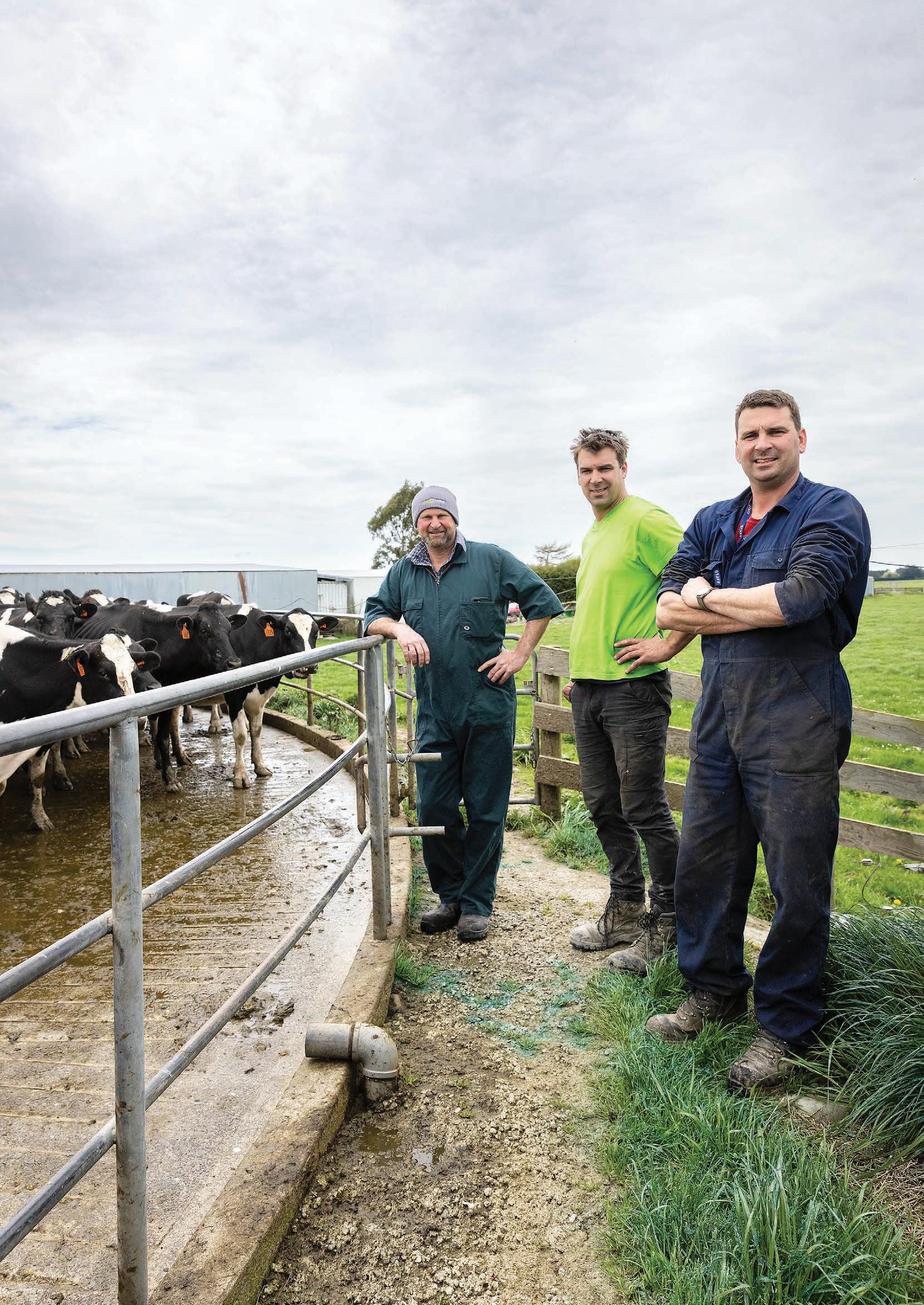
A third-generation dairy farmer got the pick of the bunch when he took on a Dutch farmer’s son. Twenty years later they – and the young man’s brother – have weathered several storms together.
When a Canterbury farmer gave a young Dutch farm exchange student a job in 2003, little did he know that the student and his brother would still be working alongside him almost 20 years later.
Geoff and his wife Rochelle Spark own two farms at Oxford, milking a total of 1700 cows on 460ha. Theo Sneek and his brother Martin are 50:50 sharemilkers on both farms.
The Sparks used to run Rural Exchange New Zealand and each year they brought up to 100 agricultural, horticultural, winery and equine trainees into the country for work experience, at the same time as running a newly converted family dairy farm.
Theo grew up on a dairy farm in the Netherlands, where his father milked 45 cows. Before coming to New Zealand, he’d spent a little time on farms in the United States.
“I could see all the applications come through and saw Theo and said, ‘You can come and work for us’,” Geoff recalls.
That six-month job turned into nine months.
Geoff is a third-generation dairy farmer and grew up on his family’s farm on the outskirts of Rangiora, where they’ve
farmed for about 80 years and still do. In 1997 the family bought another farm, further inland near Oxford, and Geoff and Rochelle moved there, converting the dryland sheep and cropping property to dairy in 1999.
“We could see the potential up here with the Waimakariri irrigation scheme coming through and we were one of the first farms to convert,” Geoff recalls.
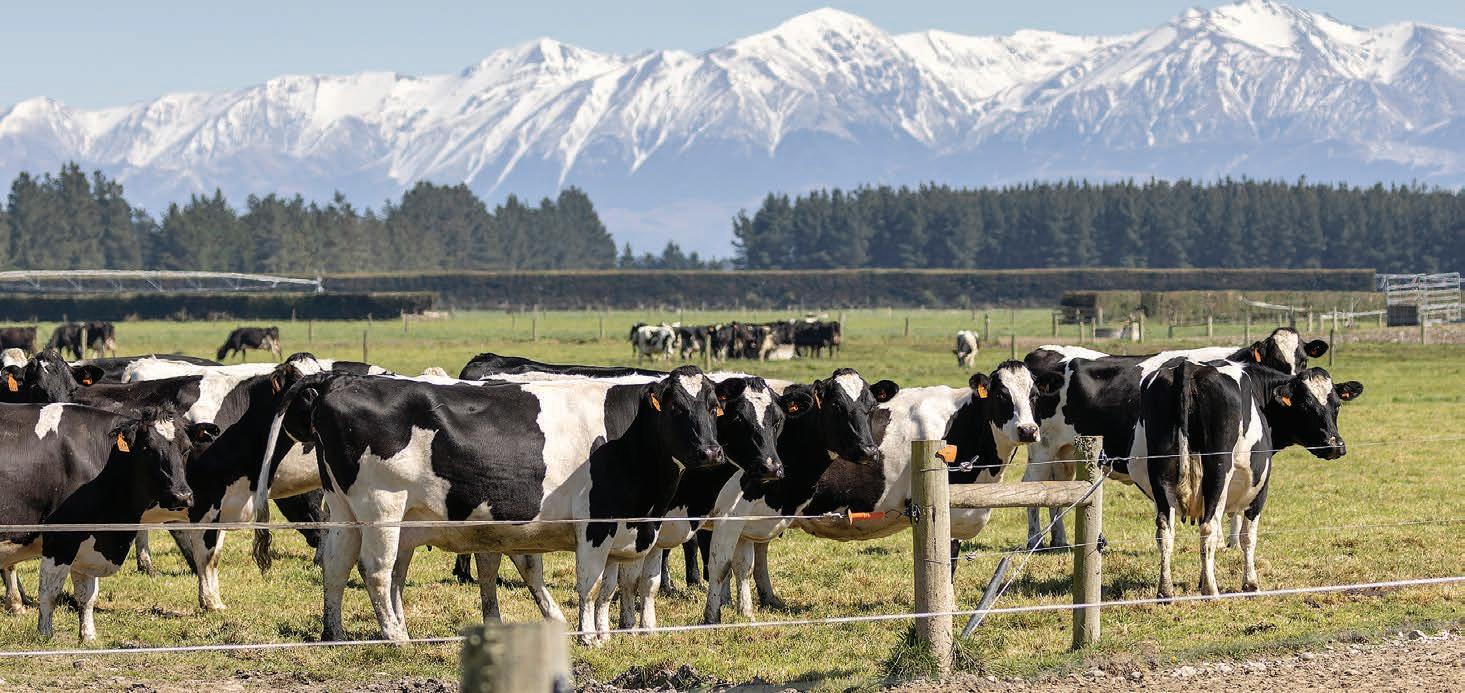
“We carried on from there and opportunities came up with other land that became available and we added on and added on and then we converted this second farm in 2010.”
While they all now work together, it didn’t happen overnight. Theo and Martin worked on other farms getting experience before re-joining Geoff. Theo left the Netherlands first and when his parents came to New Zealand to visit him, Martin was left at home to look after the family dairy farm. His reward for doing that was a ticket to New Zealand to visit his big brother.
“After that I visited every year here for three or four years,” Martin says.
“I like farming but not the way we farm in Holland. I was working at a cheese co-operative our Dad supplied, in
• Farm owners: Geoff and Rochelle Spark
• Sharemilkers: Theo and Martin Sneek
• Location: Oxford, North Canterbury
• Farm size: Farm 1 Torlesse Dairy 230ha, Farm 2 Thorndale Dairy 230ha
• Cows: 1700 Holstein Friesian
• Production: 2021-2022
• Production target: 20222023: 814,000kg MS
about
automation and process operation, and realised this is not me.
“When I visited my brother on the farm in New Zealand, I was outdoors with cows and people and it was always challenging instead of the same old thing so I made the decision to do things together with Theo,” Martin says.
Theo had returned to the Netherlands after his first stint in New Zealand but Geoff invited him back and this time he stayed three years before taking on a lower order sharemilking job in the Rakaia Gorge.
After a year there he took on a lower order sharemilking job on a large dairy operation in Culverden and Martin joined him there.
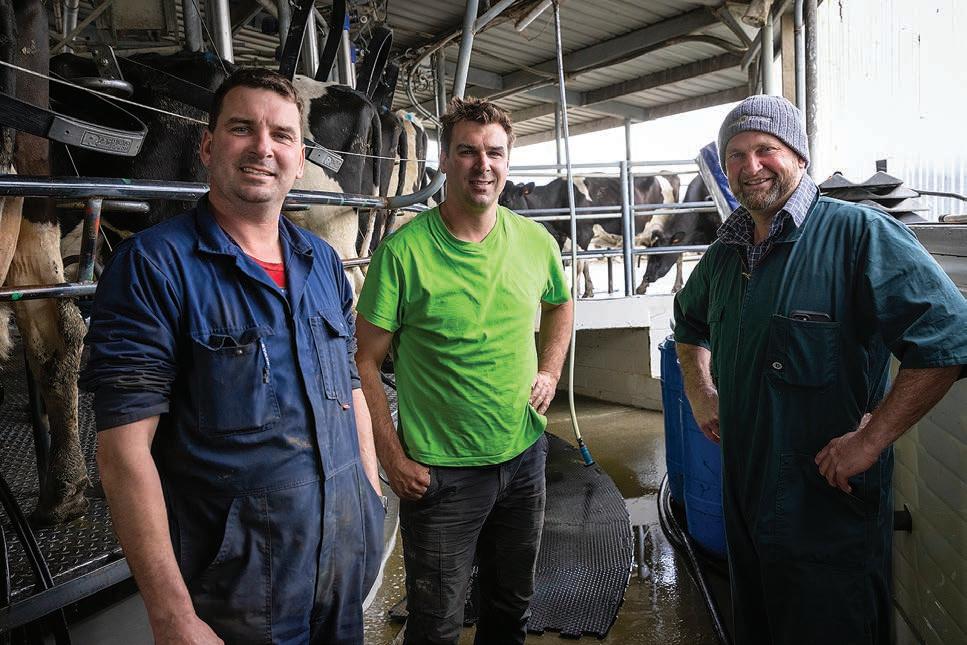
They combined their resources and gradually bought and bred cows on the side until they had 600 cows that were leased out on dairy farms in Mid Canterbury.
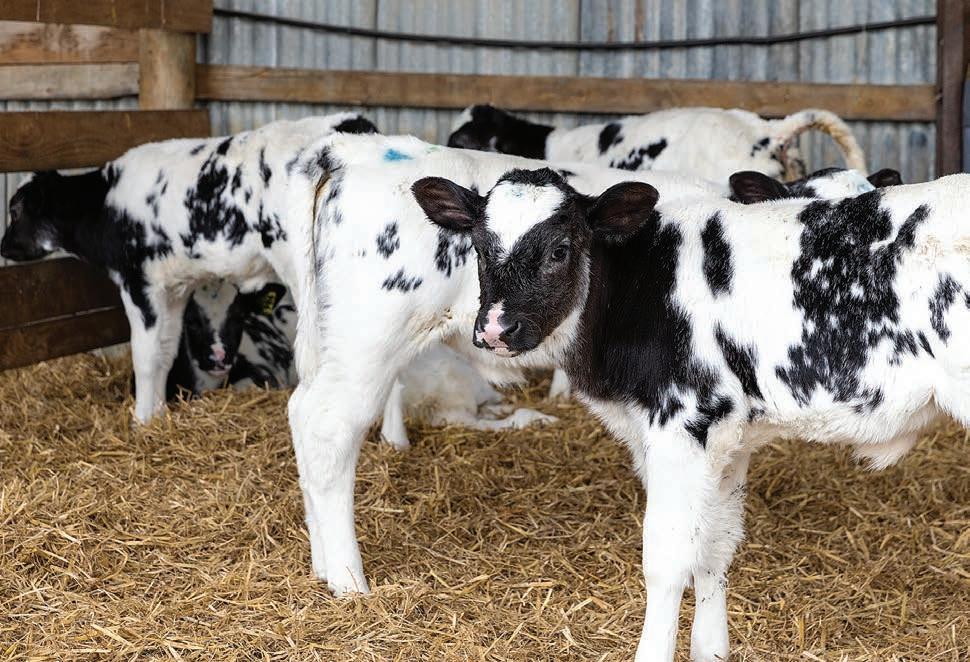
“But it was just a ticking time bomb because your job is not secure, you don’t know what you’re making or what they allow you to gain so we decided to put the cows on the market and sell them so we were less exposed,” says Martin.
He decided to take a holiday from farming and visit an old neighbour now living in Bolivia. Before he left though, a new future presented itself when Geoff rang Theo with an offer, having decided to convert the farm they had been using as a support block for their existing dairy farm.
“We started with 99ha and added another 40ha and another 57h and 18ha and we were able to grow as the opportunities came up around us till suddenly we had enough land to convert it and make it a viable proposition,” Geoff says.
“My first phone call was to Theo, in February 2010: ‘Would you come and 50:50 with me if we convert this?’, and he said, ‘Yes, if both businesses improve, then we should do it.’
“The second phone call was to the dairy shed builder to book him because we needed the shed built by the first of August.”
The shed was finished on time and the brothers took control of the new farm, having held on to their cows instead of selling them. In October Geoff had another offer for them and asked if they wanted to sharemilk on the other farm as well.
“I thought to myself maybe there’s an opportunity here because they’ve both got their strengths and weaknesses but together they’re a pretty awesome unit,” Geoff says.
“I had a young family and I thought if we offered them the other farm to give them the economies of scale they could grow their business within our business. That was 11 years ago.
“Theo and Martin came in and took over and had their own team and I got involved in other leasehold blocks and support blocks for the dairy platform so we still work closely together and have our own areas of responsibility.”
The two farms are only 500m apart so while each brother is responsible for one farm each and have their own staff, they also share resources like tractors and the silage wagon and if need be staff will work together for jobs like drenching or silage making.
The farms are both 230ha and in total they milk 1700 Holstein Friesian cow. The newer farm has a 54-bail rotary shed and the other a 40-bail rotary.
While Geoff invested in farm infrastructure, the brothers invested in gear including farm machinery,
“When I visited my brother on the farm in New Zealand, I was outdoors with cows and people and it was always challenging instead of the same old thing so I made the decision to do things together with Theo.”
Martin Sneek
automatic cup removers and Cow Manager ear sensors that monitor rumen activity and body temperature and detect cows coming on heat.

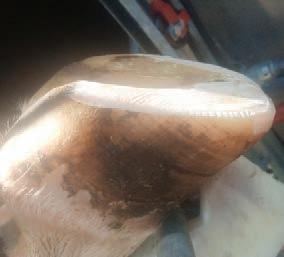
“Theo and Martin have invested a lot in technology and machinery and I’ve invested in infrastructure on farm, silage bunkers, good track maintenance, effluent ponds, irrigation storage and pivots to try to take the niggle out of the business,” Geoff says.
But in late 2017 the business partners got nearly the worst news imaginable when Mycoplasma bovis was found in the herd. All the stock was slaughtered and they effectively had to start again from scratch.
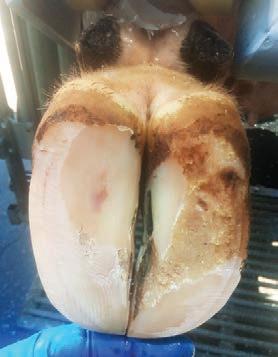
That had started when the brothers bought 146 yearling heifers from a farm in Southland. A year later, they bought more heifers from the same farm, believing they were doing the right thing
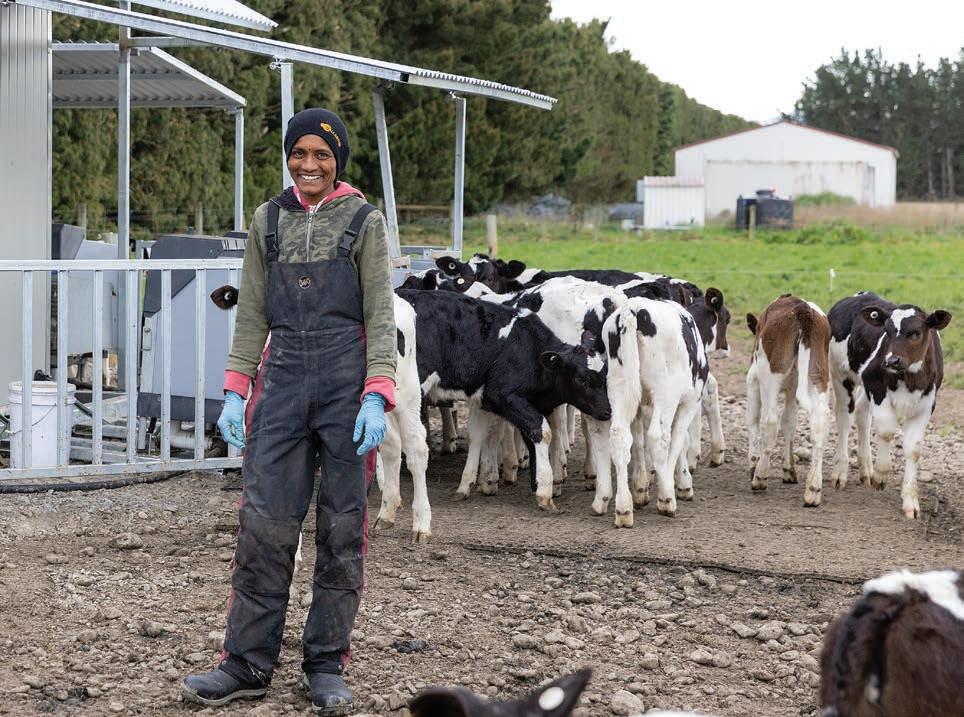




Theo first came to New Zealand as an exchange student for six months but ended up staying for nine months. He returned to the Netherlands but came back to work for the Sparks for three years before taking another job – and then returning to the Sparks.
from a biosecurity risk point of view by dealing with only one farm. But that farm turned out to be one of the first farms where M bovis was detected, “so we knew then we were involved”, Geoff says.
They were among the first farms affected and over the coming months there were seemingly endless meetings with the Ministry for Primary Industries.
“The government is saying, ‘We’ll pay you out, we’ll reimburse you for your costs’, but they don’t say when,” Theo says.
Geoff and the brothers decided to embrace the issue and do whatever it took to get through the ordeal as best they could.
“It was good that we worked together as a team, there was the three of us around the table with MPI. If it was just you on your own faced with all that change it would be really challenging.
“We focus on extracting every blade of grass first and then we’ll top up with silage. We like to fully feed the cows. We get a lot of pleasure out of looking at nice wellconditioned animals that are healthy and happy.”
Theo SneekBecause we were able to share the load a bit, it really helped us,” Geoff says.
But it was still tough seeing all their cattle sent for slaughter and with that seeing their income shrink to nothing.
“One of the biggest issues for us was the delay in the milk compensation so it was about six months of no income but the bills kept coming in.
“Because we were one of the first farms through the system, DairyNZ and MPI hadn’t organised the milk price compensation so it wasn’t until January that the first payment came through from milk that would have been supplied in August.”


Once they were allowed to get back into farming, the brothers were able to
buy heifers from farms in Bay of Plenty that were being converted to grow kiwifruit, and they were shipped south in 19 truckloads. Being able to buy capital stock rather than culls gave them the best new start they could hope for.
“They were really nice yearlings actually and the risk was we had to make sure we didn’t bring bovis back in so every animal was tested before it arrived on farm for M bovis and BVD [bovine viral diarrhoea] too,” says Theo.
“We were pretty hot on the biosecurity and now it’s pretty much business as usual.”
For the brothers business as usual means running a medium-input system, pasture based with grass silage, made on the support blocks, as supplemented when needed. They also buy in some maize silage to feed in the shoulders and feed barley in the sheds, the amount varying with the time of year.
“The cheapest milk is grass-fed milk. We focus on extracting every blade of grass first and then we’ll top up with silage,” Theo says.
“We like to fully feed the cows. We get a lot of pleasure out of looking at nice well-conditioned animals that are healthy and happy.”
Production on the farm last season was 814,000 kilograms of milksolids or about 480kg/cow.
“We’re a bit above average for New Zealand. We’re not super high input, we don’t have feed pads or anything, but we certainly feed above average,” Geoff says.
But like elsewhere in New Zealand, a cool spring means this season has started slowly and he says they’ll be happy if they top 800,000kg MS this season.
They have developed an in-thepaddock version of automatic calf feeding to help cope with the more than 900 calves – dairy replacements and beef animals – they rear. After three weeks inside, the calves go out to the paddock where the feeders are set up and each, recognised via EID tags, is fed their daily ration.

The system not only reduces the labour input but also helps keep staff interested, Theo believes, because it’s something different from the usual dairy farming routine.
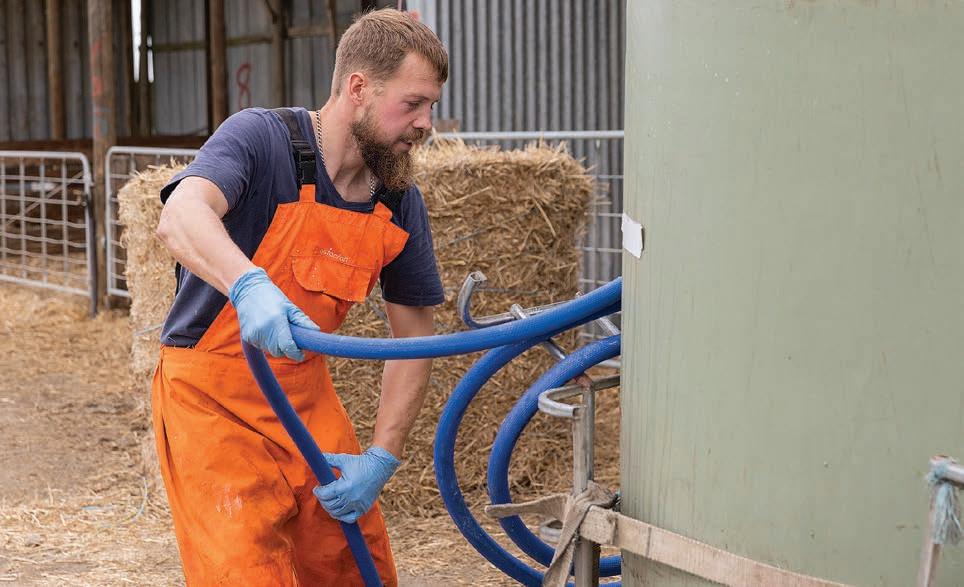
“An Irish couple is running it with support of senior people. Those two people could never keep up with consistent feeding manually. We’ve got something interesting going on and we can share the knowledge and the staff can get involved,” Theo says.
The heifers are put to Angus and when they calve around Christmas time their calves are taken off straight away to the automatic feeders, starting on colostrum
that’s been stored in the freezer. By not feeding their calves, the young cows don’t lose condition and can be
sent to the works before the schedule drops in autumn.
“It’s about utilising your investment, that’s what’s giving you a return,” Martin says.

For mating, which starts on October 25, they use only artificial insemination and no bulls, starting with six weeks mating for replacements and finishing off with Belgian Blue semen.
The brothers prefer Holstein Friesian cows, as long as they’re not too big, and use Friesian semen from Samen Genetics and CRV for their replacements and Belgian Blue over the non-replacement cows. They still have some bobbies but have minimised that with the move into beef genetics and reckon the FriesianBelgian Blue cross is a winner.
“You get a quality beef calf but you don’t wreck the cows along the way. You have to ask the question, ‘Are we a beef

Geoff and Theo check out the quality of the silage.
farm or a dairy farm?’ Well we’re certainly a dairy farm but if we can do some beef on the side and still optimise the milk production, then it’s all good,” Geoff says.
Both properties are irrigated from the Waimakariri Irrigation Scheme but the scheme is not fully reliable because it draws water from the Waimakariri








River and the supply is cut under the irrigation consent when the flow is low.
To overcome that, the Sparks have put in a 5.5ha storage pond on the new farm and there’s a well as backup on the other property. The well doesn’t produce enough for full irrigation but is sufficient to “keep things green” when the irrigation scheme is turned off, Geoff says.
The storage pond holds 18 days’ worth of irrigation water that can be stretched out to 35 days if need be. If the scheme goes off it is often during an easterly weather pattern when evapotranspiration is only 2.5mm to 3mm per day, the stored water can be rationed to make it last.

And when the weather comes in the form of hot, drying, nor’westers and evapotranspiration climbs to 5mm or 6mm, the chances are high that it’s raining in the mountains where the Waimakariri has its headwaters and the river will be high enough for water to be drawn for irrigation.
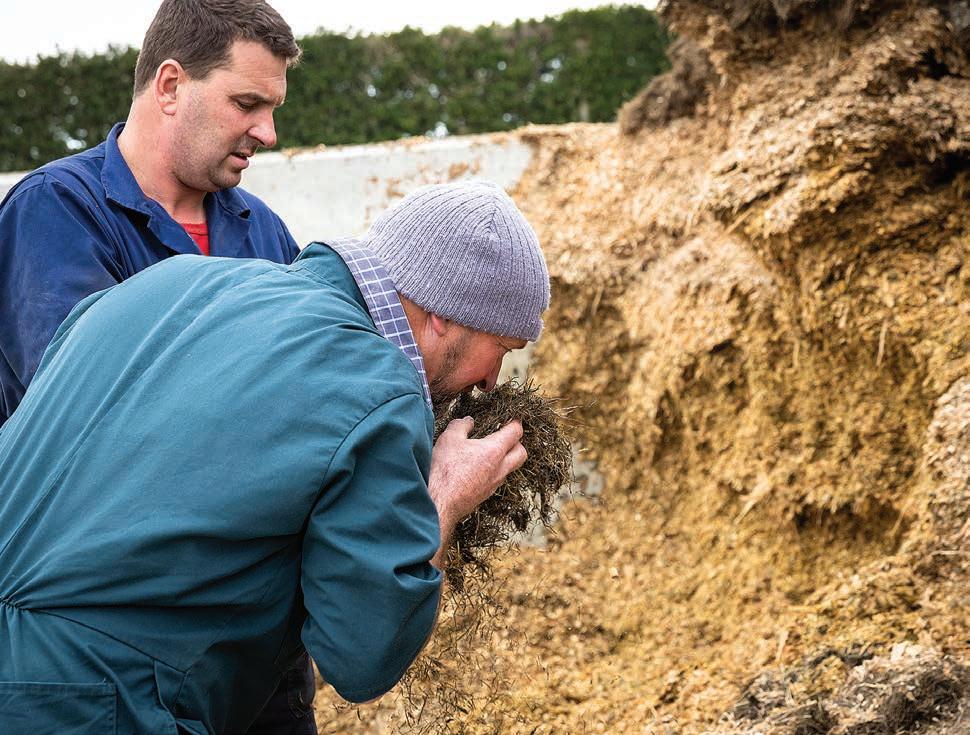



“I reckon the pond has saved our bacon at least three seasons out of the 11









New chemicals, molecules and actives mean better mastitis control with less impact on milk and water.








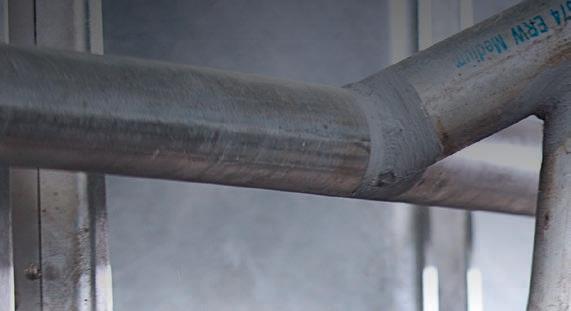
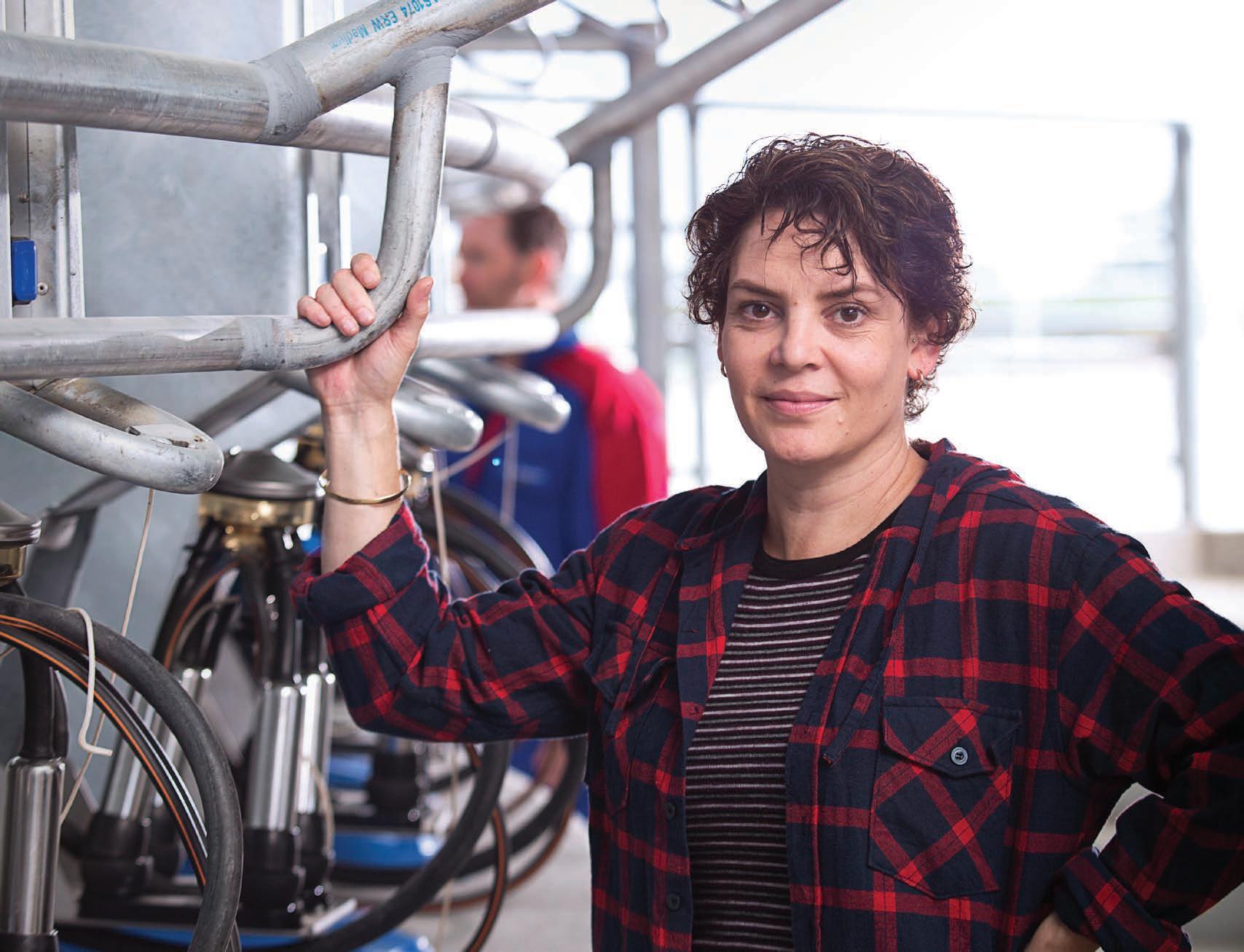
we’ve had it, where if we didn’t have the storage we would have been in trouble and had quite a significant production hit or we would have had to buy in expensive feed,” Geoff says.
Away from the farm, the brothers look for opportunities and recently bought a digger from Belgium fitted with a hydraulic motor-powered effluent pond stirrer, with the intention of offering a pond-stirring business to other farmers.
“We utilise our gear on the farm and we also like to do some jobs for others but we don’t want to go too busy because then you do lose focus.”
Another venture they’ve recently started is a concrete silage bunker business.
“We believe New Zealand farmers could improve on feed storage. Silage is expensive and in a concrete bunker, wastage is minimised,” Martin says.

“It also speeds up the harvesting process,” Theo adds.


“With contractors running at $2000/ hour, over the volume that we process I think we can easily save three to four hours per stack.”
They have worked with an engineer and now produce the concrete panels that, with the help of Darfield dairy shed
builder Nigel Hodges, can be assembled into bunkers on farm.
They say with their vertical walls, silage bunkers can hold far more than stacks on the ground and they’re much easier to feed out from.
“You’re not picking up stones or anything and everything’s clean with no stones in sprockets of the feeder. I think that’s a biggie too, with no more chains getting wrecked,” Theo says.
They’ve put a bunker on one of the farms and hope to build more on other farms once they’ve perfected the design.
The Spark family also have a 146ha beef farm in the hills behind Oxford. They run 80 breeding cows and finish 80 calves as two-year-olds on 100% Angus of 100% prime contracts with Silver Fern Farms.
Geoff is also the North Canterbury councillor with Fonterra.
“It’s great to be part of co-op like Fonterra where farmers can pool their capital to create processing and sales for our milk,” he says.

The Sparks were recently awarded the
People in the Primary sector award in the Canterbury section of the Ballance Farm Environment Awards, in recognition of the way they’ve made their irrigation storage pond available for community use.
It’s central to a local multi-sport event, the Oxman, and this month up to 400 athletes will swim, bike and run a course that starts in the Sparks’ pond, travels around local roads and finishes back on the farm.
“When we designed the lake we had that in mind because we have great road-riding around here so we thought if we designed the lake cleverly, it could be more than just irrigation storage – it could be well-suited to triathlon,” Geoff says.
“It was kind of like build it and they will come, and they did.”
The event is used as a practice by many athletes preparing for the big Coast to Coast multisport event. The pond and farm will also be used for the Canterbury primary schools triathlon when up to 1000 children will swim, bike and then run around part of the farm.

“The cows grazed the transition and parking areas last week and we’ll heavy roll it and then take a cut of silage off it before the race so it’s presented nicely. We can do that without too much hassle for us and we can run the farm around it. It’s a really nice public good thing we can do.”
For Geoff the event is a chance to build bridges between town and country.
“This as an opportunity to help enhance the rural-urban connection. We don’t like talking about a divide, let’s put a positive spin on it – what can we do to bring urban and rural people together?”
“We thought if we designed the lake cleverly, it could be more than just irrigation storage – it could be well-suited to triathlon. It was kind of like build it and they will come, and they did.”
Giving back to an industry that gave him so much, a Canterbury farmer invites dairy farmers for some complimentary R and R in one of his ‘pods’.
Canterbury’s Richie Bocock knows as much as the next person that a life dedicated to dairy farming can throw a few challenges.
“When I left dairying six years ago, I felt that things might have been getting on top of me a wee bit,” he says. “Our decision to leave dairying and pursue a different path – while still living on the land – was a positive move; we have created something good for our family.”
Richie, with wife Kate, owns Te Wepu Farm on Banks Peninsula, near Christchurch. They bought the 32ha property in 2016 and have since built a multi-faceted business that not only supports their love for the land but recognises the need for a lifestyle that is sustainable.
The couple run beef animals, cultivate a sizeable avocado orchard and have built unique accommodation “pods” that allow guests to take in views of nearby Akaroa Harbour and reset from the pressures of everyday life.
When the couple decided to leave dairying after 10 years in an equity partnership, they were unsure of their next step. However, after they “stumbled across” Te Wepu, plans for a different kind of business on the land took shape.
Te Wepu was founded in 1843 in the historic French Farm Valley on the western side of Akaroa Harbour.
Richie and Kate bought the farm in 2016 and moved onto the property in 2017. In the first 12 months the property underwent a big transformation, starting with the renovation of the house.
They established a small mob of beef animals and prepared an area to plant an avocado orchard.
Having ordered the avocado trees in 2016, in October 2018 they planted 80 trees, which are now six years old and have their first crop coming on. They have expanded the orchard a little to 90 trees.
“Planting the avocados has been very exciting,” Richie says.
“No one else in the region is doing it – we believe we are the southernmost avocado orchard in the world. Hopefully, the avocados will provide a reasonable chunk of income going forward.

“I was taught that the only way to get anywhere was to take a risk.”
That was certainly the case when they came up with the idea of building the pods to supplement their income.
“That is 90% of what we do now – host guests in the pods, nine months of the year,” Richie says.
The three sleeping pod sites are dotted around the top of the property, which is covered in bush with beautiful views of Akaroa Harbour, Onawe Peninsula and French Farm Valley.
Each site has two pods: a dedicated sleeping pod that sleeps two, and a utility pod, which includes a composting toilet and changing area.
The pods were built off site and helicoptered in in 2017.
Each private setting has a wood-fired hot tub, fire pit, gas BBQ and spring water, and is positioned out of sight and sound of the others.
Guests are given the choice to 4WD themselves to their pod or hike the beautiful 20-minute walk with bags (and/ or guests) transported by the Bococks on their 4x4 Kubota, known as Donald.
“We didn’t want to do glamping under canvas because others were doing that and we wanted to do something different,” Richie says.
“We included the hot tubs straightaway and try to do things a bit different by including our home-grown beef in the hampers that Kate makes for guests.”
The hampers are loaded with fresh, seasonal and local produce: steak and sausages from the grass-fed beef herd at Te Wepu, Kate’s famous cob loaf, fresh
fruit, vegetable kebabs and wine, among other delicious treats.
“Kate has real strengths with the marketing and business side of things; I’m more of the firewood guy,” Richie laughs.
He says one of the most rewarding things about having the pods is seeing the difference a couple of days of rest and relaxation can make.
“You see people turn up and they look absolutely knackered, and they are totally different people on the way out,” he says.
“They can take in the views and the environment, get off the computer, sit around an open fire and reconnect.”
He says about 70% of the people who stay are Kiwis, and many of those are local Cantabrians.
Richie and Kate have given nights’ accommodation to staff at the Intensive Care Unit at Christchurch Hospital, St John Ambulance, and local farmers affected by M bovis, through the Rural Support Trust.

“We would have hated to be in that situation, and at that time dairy farmers were also getting a bad rap across the

board; they were getting pummelled,” Richie says.
“We wanted to give something back to the industry that gave us so much.
“When you’re dairying, getting off the farm can be hard. We actually invested in a holiday property to make us get off the farm when we were dairying.”
Despite their decision to leave dairying, which has had an excellent outcome for their family, Richie says dairying is still a fantastic industry.
“We’ve been away from dairying for six years and things have changed a lot in that time, but it is still rewarding and you can still achieve goals if you come from a limited background, alongside the right people,” he says.
“It is important to recognise when things are getting on top of you. In dairying, you can be caught up in a bubble of peer and industry comparison. There is a lot of support out there, rather than battling your way through it on your own. I used to be a ‘head down-bum up’ kind of guy in tough times but it’s not good for relationships.”
Richie was born and bred in Te Awamutu; his father was a builder but he and his five siblings grew up in a rural community. They were encouraged to milk cows on neighbouring farms for pocket money, which prompted Richie’s love for the industry.
“Our parents really instilled in us the value of hard work,” he says.
“From a young age I had an interest in farming, but I knew I had to get an education first.”
Richie spent one year working on farm for Jim van der Poel before he attended Massey University, completing a bachelor of agriculture.
“I knew I didn’t want to milk cows
ank your staff OR book your own escape at Te Wepu Pods, Akaroa Online vouchers are available.




“No one else in the region is doing it –we believe we are the southernmost avocado orchard in the world. Hopefully, the avocados will provide a reasonable chunk of income going forward.”
Richie Bocock
but I did want to work in the industry, so I started as a stock agent for PGG Wrightson; I stayed there for five years, working in Feilding and then Wairoa, Hawke’s Bay,” he says.
“I got to know the sheep and beef industry well, and was able to build on my people skills, which held me in very good stead.”
Richie met his first wife during this time, and found he had an urge to get back onto the land.
“With my dairying background from childhood and the contacts I made at university I was able to get a job contract milking straightaway, in the Waikato,
where I stayed for four years,” he says.
“That was the greatest benefit of the education I received – the people I met and contacts I made.”
After a further two-year stint in Australia, where they contract milked for two years, they returned to New Zealand and looked for a new farming position.
“We knew we didn’t want to farm in the Waikato, and it was the year 2000, when the moratoriums came off farm conversions in Canterbury,” he says.
“I got a job as a conversion manager for Dairy Holdings at Oxford, while simultaneously contract milking, and then 50:50 sharemilking.”
Richie spent seven years on that farm, during which time he and his wife separated.
“I started again with a new partner, Kate, and a new job,” he says.
“Kate and I felt we needed to seek a new opportunity, so we entered an equity partnership with the Wilkinson family in Ashburton.”
With a background working for the major fertiliser companies, Kate understood the industry and she and Richie worked well as a team.
“Having the right partner alongside you is incredibly important,” he says.
Richie says surrounding yourself with positive people also matters.
Three accommodation pods are dotted around the top of Te Wepu, which is covered in bush with beautiful views of Akaroa Harbour, Onawe Peninsula and French Farm Valley. Each site has two pods: a sleeping pod that sleeps two, and a utility pod, which includes a composting


and changing area.
“As a 17-year-old Jim van der Poel was a strong mentor of mine,” he says. “He always said, ‘Richie, you’ve got to make things happen.’ That always resonated with me. You have to look at opportunities, work hard and take them.”
Richie also acknowledges his brother Shane.
“He really taught me a lot about dairying when I was a teenager,” he says. “He went on to win the 1997 BNZ
“When you’re dairying, getting off the farm can be hard. We actually invested in a holiday property to make us get off the farm when we were dairying.”
Richie Bocock
National Sharemilker of the year which, at that time, was a huge inspiration for me to be able to succeed in the industry as well.”
Richie “has his hands full” with five daughters – three older girls in their 20s from his first marriage, and two girls aged 12 and 13 with Kate. He is also a grandfather.

Richie says his cup has always been half-full.
“When you’re 53 like I am, you’ve been through a lot of ups and downs and some people just don’t have the privilege,” he says.


“I always wake up believing that today is going to be a good day, and that we need to make the most of what we’ve got.
“We could have done things differently; we could have focused more on growing the dairy business.





“But I would like to think that there is always someone worse off than myself, so I should be grateful for all of the positive things that we have achieved as a family, and what the dairy industry gave me for those years that we were a part of it.” n
Remove the need for tail paint and stickers with CowManager’s revolutionary ear tags. Auto drafting integration is quick and simple, making mating enjoyable and hassle-free. Let CowManager work for you.







Sometimes all it takes is the right opportunity at the right time to land you on the right path.
AWaikato farmer who loves to be busy had to turn down a business opportunity in homeopathy when it came her way because the timing wasn’t right. However, when the opportunity presented itself for the second time, she just could not say no.
Tracey Simpson and husband Murray are sharemilkers on three Tirau farms, milking 900 cows and supplying iwi-owned dairy company Miraka.

Getting out on the farm, sorting out the kids or working in her own business, Simpson is at her best when juggling life.
“I think the real nuts and bolts is that I like having a purpose,” she says. “There’s purpose in being a mum and a farmer. So when the opportunity came up to buy Homeopathic Farm Services, I had to jump at it. After learning about homeopathy and seeing what it can do for myself, I became passionate
about it, and now I get to share it with others.”
She has been involved in the world of homeopathy for over a decade. She gained the necessary qualifications,
and trialled different homeopathic approaches to her own farming practices. Now, she gets to help other farms and animal lovers make gains through the use of her
products.
Born and bred on a dairy farm in the Waikato, she left school at the age of 17 to go farming. A few years in, she switched paths and went into
Ozone is a powerful eco-friendly sanitizer Eliminate birds / prevents nesting Sanitize workplace / environment Non-toxic / leaves no harmful residual


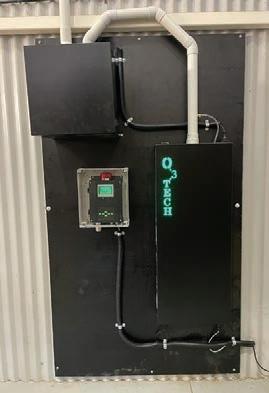
a career as a veterinary nurse.


“I’ve always loved the medical side of farming, which is probably what drew me to be a vet nurse. I met my husband Murray during this time and got my boots back on the ground when we took on our first sharemilking gig together in Tirau. We were a young couple and broke, but it was exciting.”
Unbeknown to them, the herd they bought to kickstart their farming career had bad facial eczema issues, and their first year was full of heartache in trying to get things under control.
“It was a nightmare. At the end of our first year of sharemilking, I went to see a homeopath on my sisterin-law’s recommendation. I was having trouble with my periods and wanted to get it sorted. We ended up chatting about the farm, and I explained what was going on.”
“We often get people come to us as a last resort, and that’s okay. People don’t know what they don’t know; the same goes for homeopathy. It creates some interesting conversations, which I love.”
She was given her first vial of Chelidonium to take home and give to the cows. Chelidonium supports the liver and assists the body’s immune system in the function of the liver.
“After nothing else was working, this made such a difference. It gave their livers a clean-out, and after three weeks, they seemed to be doing much better.
Homeopathic Farm Support aims to assist and support farmers in improving their animals’ health. The products are BioGro-certified organic.

That’s the wonderful thing about animals, they never lie, and the results spoke for themselves.”
This sparked an interest in homeopathy and its many uses for humans and animals. Eventually, she was inspired to pursue the study of homeopathy in 2008. She says that it changed her whole perspective on farming, which helps her in battling the attitudes she often comes across in the homeopathy industry.
“I think what I’ve come to see and realise through using it on my own farms is that it’s not a one-or-the-other thing. Sometimes what you need is a dose of penicillin to get the best outcome for that animal, and it’s utilising the best of both worlds for the greater good of your stock.
“You have to be openminded and realise there are other modalities that can be beneficial for human and animal care. Sometimes it’s the best option, and sometimes it doesn’t touch the sides.”
During these years, she was juggling study, farming and starting a family. At one point the couple were sharemilking 1200 cows across four farms for Te Raparahi Lands Trust

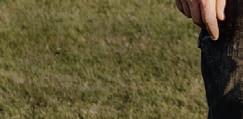
clinical mastitis for seven years and were treating 20 percent of the herd annually Not only was it was costing them in treatments and time, they also had the constant risk of penicillin grades.

Dairy farmers, like the Hornblows, know that being proactive with herd health is paramount for achieving results and gaining efficiencies. Kirstie and Rob encountered challenges with E.coli and black mastitis, and high somatic cell count during their first season contract milking 1,200 cows.
With FIL and Farm Medix’s suppor t, they were able to dig deep, find out which pathogens they were dealing with and implement a prevention plan Today, Hillbrook Dairies are on top of mastitis with more knowledge and better practice – and the herd’s somatic cell count is the lowest it has ever been.
That’s what we call a good partnership. Ask us how we can help improve your farm’s profitability.


They set out with a clear vision that implementing best-practice udder health procedures during calving would be best for the long-term health of the herd, the team and their young family.
Get in touch with your local area manager on 0508 434 569 or visit FIL co nz

Now into their third season, they’ve lowered their SCC to 125,000 and mastitis to 8%. They’ve also reduced their antibiotic resistance and eliminated the need for any red drugs.
That’s what we call a good partnership. Find out how the Hornblows have reduced mastitis on their farm. Scan the QR code or go to FIL.co.nz.




and even buying into a small farm with the trust for a few years.
“I remember sitting at the kitchen table until the wee hours of the morning to get my study done because I was busy out on the farm and with the kids during the day. It sounds crazy when I think back on it, but I just did it. It was all things I enjoyed, and the farm and the homeopathy study worked really well together.”
When the payout dropped, they had to make some hard decisions and ended up scaling back to three farms and 900 cows. Homeopathy plays a big role in their farms’ animal health strategy, particularly their calf-rearing policy.
Eventually, she linked up with Tineke Verkade, a homeopath who owned Homeopathic Farm Support, who she’d met previously at one of Verkade’s seminars.
Simpson worked for Verkade for a few years before the first opportunity popped up for her to take on the business.
“At the time, I was just too busy. Between the farms, which I was fully involved in every aspect of, and the kids, it was just unrealistic even for me.”
Then in 2018, Verkade approached her about the business being for sale again, and this time Simpson said yes.
“It made sense, but it was a scary step to take. We thought about it for a while, did our research, talked to our accountants, the whole due diligence. In the end it was my brother-in-law who said, ‘If homeopathy is your thing, then just do it.’ That was a little lightbulb moment.”
The business, which was originally based in Hamilton, aims to assist and support farmers in improving their animals’ health in a gentle, safe, effective and environmentally friendly
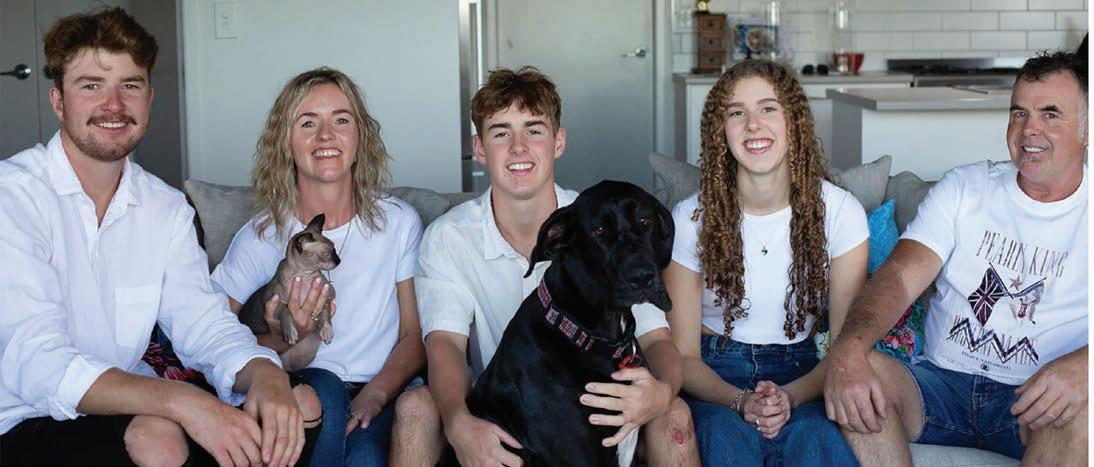
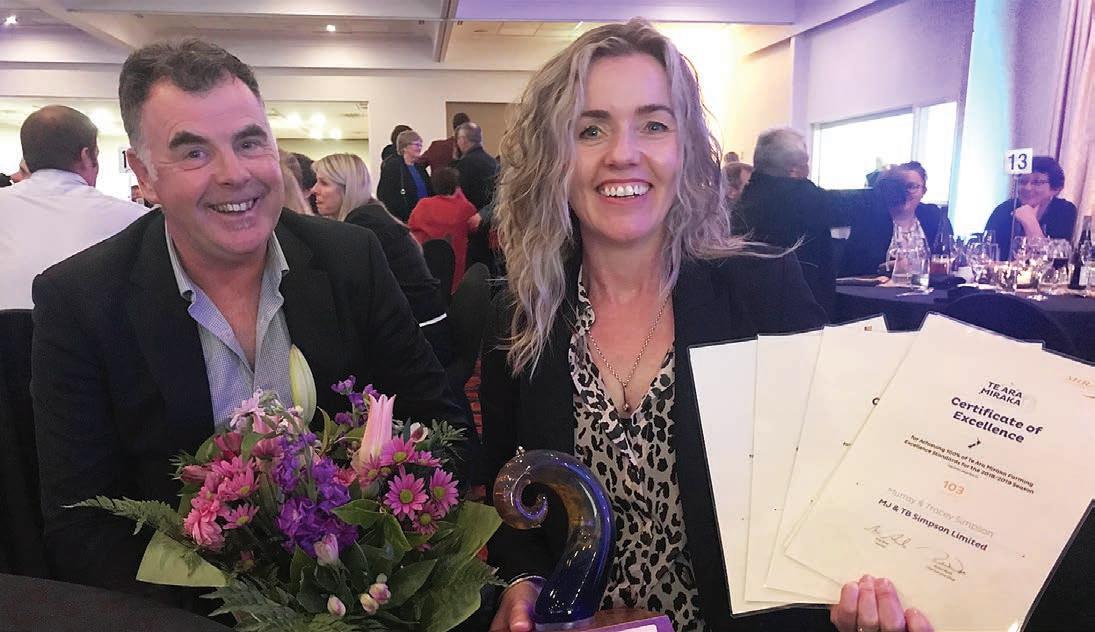
manner. Simpson and her team do this through sales of their range of BioGrocertified organic products and by delivering seminars, discussions and talks with farmers to educate them about the uses and benefits of homeopathy.
The ins and outs of purchasing a business are extensive, but despite their busy farm and home life, she loved having the chance to work on something that was just hers to grow and nurture. Adding to her CV, she’s also recently finished up her diploma in homeopathy (animal health). But her biggest challenge has been putting herself out there and
talking about her products.
“Its incredibly hard to step into a sales role. Often farmers can be challenging to deal with, especially with this sort of business. I think that’s where being a farmer myself really helps, I can understand their concerns and perspectives. I’ve spoken at a few seminars, and it gets a bit easier each time.”
She says she has a fabulous team behind her, including another homeopath and an administrator. They help round out the skills the business needs to run and grow.
Despite the growing interest in animal homeopathy, especially in the small-animal world, one of her biggest challenges sits with farm animals. She recalls many occasions when homeopathy has been referred to as “witchy stuff”.
“We often get people come to us as a last resort, and that’s okay. People don’t know what they don’t know; the same goes for homeopathy. It creates some interesting conversations, which I love. I always tend to come back to one point: how do you get to the 21st century and still be so narrow-minded? There are so many other modalities that can be beneficial to human and animal care. Homeopathy is simply another option or tool in the tool kit.”
When it comes to the logistics of farming and
operating a business, she jokes she’d love it to run like a finely tuned engine, but often she feels like she’s flying by the seat of her pants.

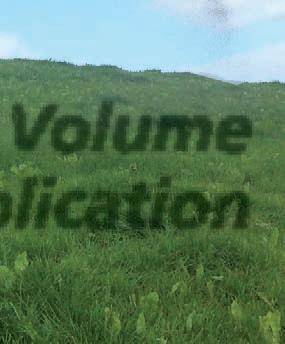
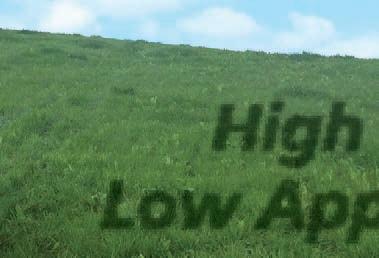

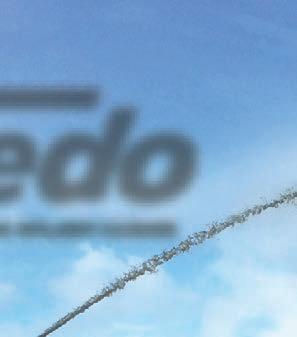
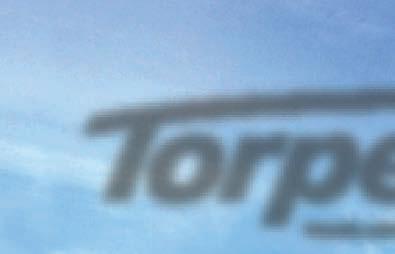

“The first three years it was a whirlwind. Travelling between the farm and the office isn’t always easy depending on the time of year, but I think what helps most is that I often don’t feel like I’m ‘working’. Be it on the farm or in the office, I enjoy what I do. It sounds cliché, but if you love what you do, it doesn’t feel like work sometimes.”
With a recent shift in premises to accommodate the growing business, she’s increasingly looking to the future and figuring out what that might look like for her business and her family. On the business front, she is hoping to hold more seminars and workshops to educate people about human and animal homeopathy. Simpson is keen to continue growing the small-animal side of her business and eventually be in a position to talk to and inspire up-and-coming homeopaths by sharing her own experiences.
“Whatever the future holds, family will be at the centre of it all. My husband and kids have been a huge support over these last few years, so ensuring we are always striving to achieve some form of balance in life is essential.” n
Tracey tries to spend as much time as she can with her family while trying to juggle the farm and business. Tracey and her daughter Greta take milk out to the calves.

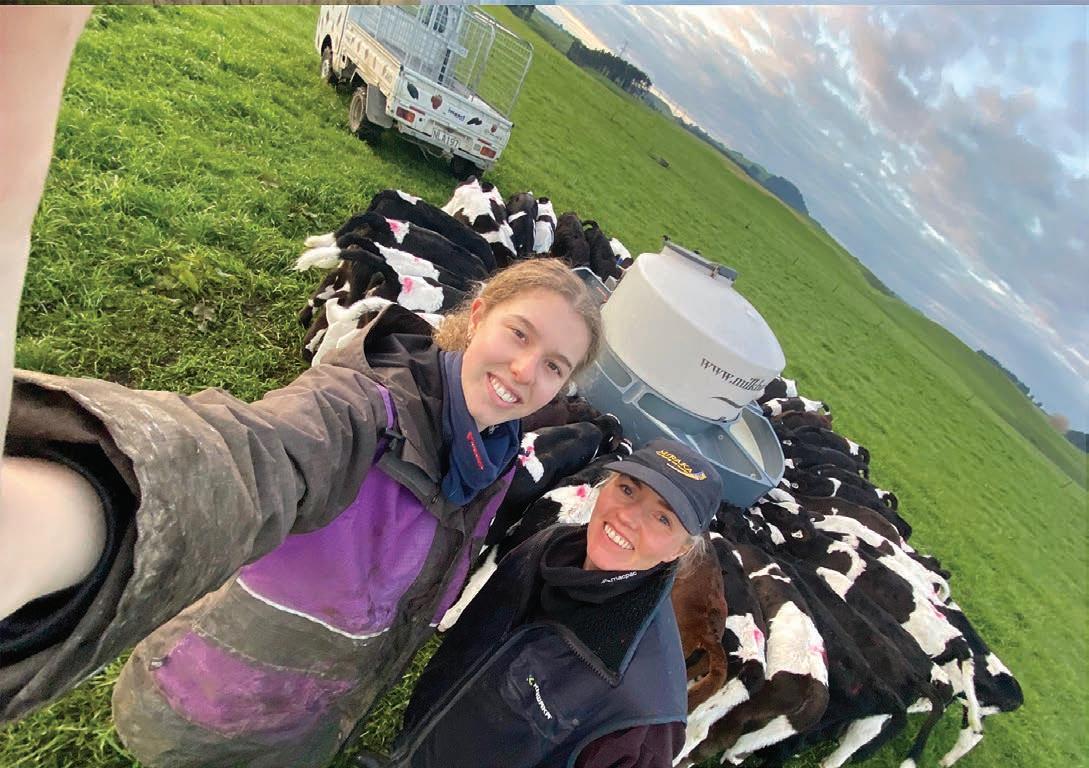 Homeopathy plays a big role in their farm’s animal health strategy, particularly their calfrearing policy.
Homeopathy plays a big role in their farm’s animal health strategy, particularly their calfrearing policy.
Opportunities for migrants in the dairy sector are there for the taking as one Canterbury farmer from Fiji has found.
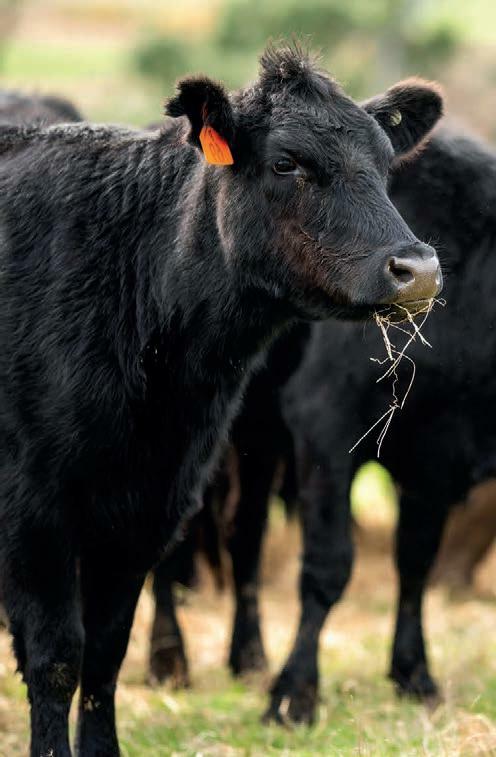
When Mahraaz Hussein received the offer of a better life for his family, he jumped at the chance but never imagined he would end up immersing himself in dairying.
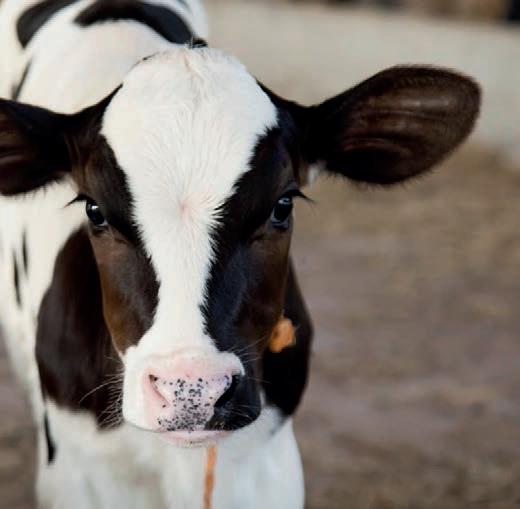
Hussein, who qualified as a welder, arrived from Fiji in 2015 and his brotherin-law encouraged him to go to the South Island. During that visit he got the opportunity to experience dairy farming, which piqued his interest enough for him to consider giving farming a crack.
Now he has beaten his five-year career goals and is managing a 700-cow farm and accompanying support block in Canterbury for Pāmu. And he largely credits the study opportunities with helping him achieve his career journey.
“There’s a lot that goes on behind the scenes that people don’t know about, and studying through Primary ITO helped me learn and understand things very quickly,” Hussein says.
“It helped me understand some of the most basic stuff. For example I thought

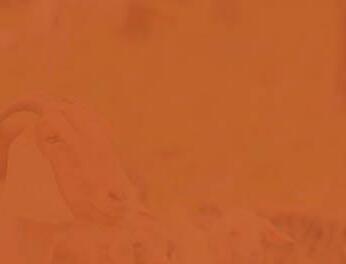

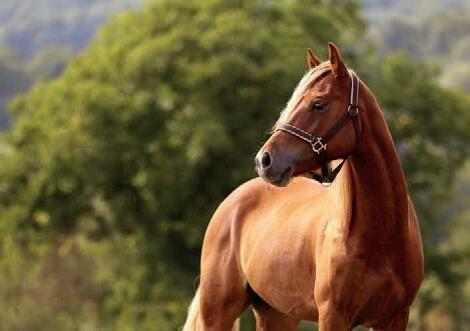
milk was sold in litres and had no idea about milksolids.
“People in the sector talk very technical and it can be hard to understand when you’re new but my study helped me learn things in basic terms and it helped me share it with my family too.”
He started as a farm assistant on a busy farm before his family followed him
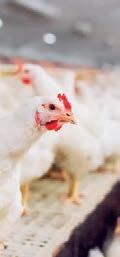
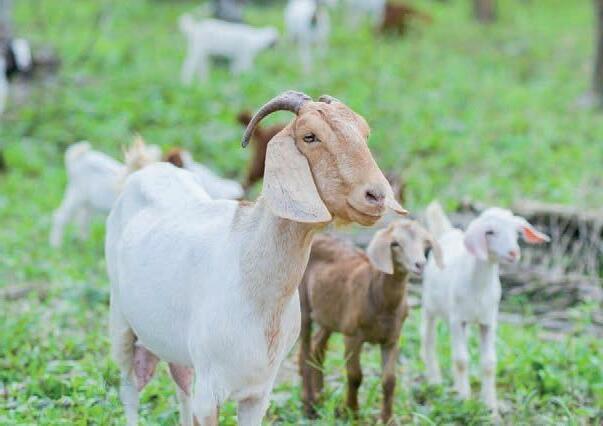





Mahraaz Hussein was a welder in Fiji when he was offered the chance to come to New Zealand. He decided to give farming a go and is now the manager of a 700cow in Canterbury for Pāmu.

from Fiji, but the living conditions and lifestyle were not suited to family life. So he looked for a more suitable role and was fortunate to secure a role with Pāmu.
“I’m very grateful for the opportunities I’ve had since I’ve been with Pāmu,” he says.
“My first manager was big on study and got me into Primary ITO. I started on


level 3 and worked through level 4 and 5 and now I’m working on my Diploma in Agribusiness.
“For anyone who wants a good future in dairying I always recommend they get into some study. I’m living proof of how valuable it is.”
His career with Pāmu has developed from farm assistant to 2IC. He then moved to another area to manage an organic farm for a couple of years before returning to Canterbury to take on his current role.

He has a great team, and Pāmu invests heavily in development and succession among its teams.

“I have a very capable 2IC and 3IC, so if I’m away and my 2IC is off at any time, we have the 3IC able to step up and make decisions.
“Some of the internal training we do is also about developing the team to support their future with Pāmu. There are great opportunities.”
His family have relished the rural lifestyle. They all enjoy the freedom and peace of mind. His wife, Susana Khan, got into calf-rearing not long after she moved over and has enjoyed the change of pace. They had both been involved in various office jobs back in Fiji.
“Back home there isn’t job security, so you need to have a range of skills and be ready to adapt to new things all the time.
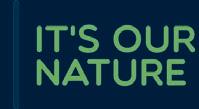

“We worked in a range of sectors and it was just what you did, adapted, but it’s such a relief to be in dairying where you can work hard and make progress and enjoy what you’re doing.”
The farm is 450ha total, including 99ha of support block where they run the youngstock and beef animals. They rear all the calves. In all, 160 replacements were kept this year and 180 beef calves to add to the R1s grazing at the support.

They have irrigation and grow winter crops on the platform.
Within Pāmu they regularly visit other farms and have plenty of opportunities to learn and provide feedback.
“We visit one of the other farms every month as a group, learn about their operation and take ideas back to our own farms.

“Plus we get to question what they are

doing and share our thoughts, it’s a really supportive environment and a great way to learn.”
Since he has already achieved his fiveyear plan of completing his Primary ITO courses and becoming a manager, he has started thinking about what to set his sights on next. After he completes his diploma he will consider looking at the Pāmu regional business manager role sometime in the future.
He has reservations about taking on debt to buy a herd or farm anytime soon, given all the uncertainty in the economy. It could be on the table one day but he does know dairying is where he wants to be no matter what.
“I wish I knew about dairy sooner, but I’m pretty sure this is where I will retire. It would take a lot to persuade me to leave the sector for anything else.” n
At Pāmu, we’ve spent over 130 years getting to know New Zealand dairy farms. We’re natural innovators who apply fresh thinking from the paddock to the milk bottle and every step in between. Pāmu is looking to employ grounded, motivated dairy staff and develop their knowledge and capabilities. With a range of dairying opportunities available, our career pathways are defined so that you can learn, develop, and advance. We lookout for the health, safety, and well-being of all our staff with modern, well-maintained facilities and farm equipment. No matter which path you want to take with your dairy career, there’s a place for you at Pāmu. Interested in being a part of the new future of dairy farming?

Visit: pamunewzealand.com/jobs

 Mahraaz began as a farm assistant and worked his way up the ranks. He has completed Primary ITO, level 3 – 5 and is working on his diploma in agribusiness.
Mahraaz began as a farm assistant and worked his way up the ranks. He has completed Primary ITO, level 3 – 5 and is working on his diploma in agribusiness.
“For anyone who wants a good future in dairying I always recommend they get into some study. I’m living proof of how valuable it is.”
Mahraaz Hussein
DairyNZ extension partner – Waikato North
Our team at DairyNZ recently caught up with a leading young Waikato farmer in our Talking Dairy podcast.
Twenty-three year old Jimmy Cleaver won the 2022 Auckland Hauraki Dairy Manager of the Year at the Dairy Industry Awards, and also received our DairyNZ People and Leadership award.

He manages a 360-cow farm in Rangiriri in the Waikato and owns 66 cows in the herd, which he leases to farm owner Grant Clune.

Creating a good workplace and enabling his two staff and himself to enjoy a good lifestyle, is a focus for him. He recommends finding out what your team enjoy doing most on farm, then encouraging them to build their knowledge.
He focuses on easing staff into difficult tasks, while offering advice to support confidence.
develop. We also have resources on coaching and mentoring, and a training plan template to map out the skills your staff want to develop.
Cleaver and his team often hold their regular team meetings at the local bakehouse. These provide them all with the chance to talk about issues happening on farm and other things –like the latest rugby or cricket – thereby getting to know each other better.
When he’s not working, Cleaver is hunting and diving. Getting a break from the farm means he comes back refreshed and open to new ideas and different ways to look at things.
We know that finding out what your farm team enjoy doing on farm and off farm is a simple but great way to build a positive relationship with them, and to support them to achieve their goals.
To support both managers and farm teams, DairyNZ has a guide called Giving Quality Feedback to help with giving employees advice that helps them

He encourages his team to also get off the farm, take part in local activities and get away for regular breaks.
Taking time off is particularly important now for both farm teams and owners, after coming through the busiest time of year, so you can recharge your batteries for the rest of the season.
Encourage your team to plan some leave and make sure they’re getting good, regular breaks from the farm now
with DairyNZ
that there might be more time available.
DairyNZ has a range of resources to support people management on farm.

These include:
• Resources to help with advertising and interviewing for jobs
Checklists to support employers and staff when new staff join the team
• Templates for performance reviews
A draft farm policy manual example, and health and safety policy template
• A leave calculator
• Workplace 360 – a tool to help identify opportunities to improve your workplace, for yourself and your team.
To access these resources visit www. dairynz.co.nz/people n
To listen to the podcast and hear more from Jimmy, visit www.dairynz.co.nz/podcast
DairyNZ resources to help build a top performing team
“Taking time off is particularly important now for both farm teams and owners, after coming through the busiest time of year, so you can recharge your batteries for the rest of the season.”
The annual tradition of calf club dates back to 1911 when a Boys and Agricultural Group in Otago held the first recorded event. It remained a firm favourite on the agricultural calendar – until Mycoplasma bovis emerged in 2018, threatening to ruin the tradition.
But a group of Waikato farmers banded together to create Calf Club NZ, a digital competition where children from all over New Zealand could submit entries online. Judging was done on farm. Even though Calf Clubs were reinstated in 2020, Calf Club NZ has endured and this year it received record levels of interest.

Calf Club NZ 2022 took place during the third-term school holidays in October, and we received many submissions. A big congratulations to everyone who competed.

We ran things a little differently this year, changing the submission process to allow kids submitting entries online to take photos and write their pieces on the day of submission. Because of the change in dates, we saw an influx of contestants from Southland; it’s great to see so many kids taking part.
This has been our best year yet, with 272 entries for the on-farm competition, and 173 online submissions.
Thankfully, to judge all those submissions, we had 41 registrations for volunteer judges, and some even brought along assistants so they could learn the process.
These judges were needed, with the country separated into 22 different regions, including two video sections for kids not reachable by judges on farm.
We have more prizes and sponsors than any year before, and it’s all possible thanks to the young Kiwi kids and judges who get involved every year.
A big shout-out to all our volunteer
judges who gave up their time to help our children take part. Thank you for helping and we hope you enjoyed taking part. A special thanks to Sophie Cookson and Michelle Burgess, who spent hours liaising with volunteer judges, organising regions and working tirelessly to make everything run smoothly. – Josh
Thank you to all the children and their calves who took part in the Calf Club NZ 2022 competition, you have done a great job, and congratulations to our regional and national winners. Thanks to the wonderful organisers of Calf Club NZ, sponsors and volunteers judges and
everyone else who pitched in. You have once again stepped up to help keep this grassroots annual tradition alive and given children the experience and opportunity to compete on a regional and national level. Without your support, Calf Club NZ would not be possible.
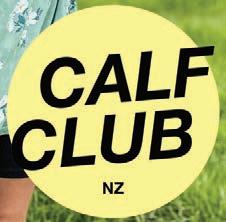
The team at Dairy Farmer are proud to be a part of this initiative and we hope to see you all again next year. – Sonita
All results including national winners for Calf Club NZ 2022 are available on the Calf Club website.
Check out next month’s issue for National winners and the winner of the Social category.





All made possible with the support from:







If a trusted and skilled farm manager is beyond rubies, his employers – and their cows – have a real gem in Chris Boxall.
All dairy farmers know how hard it is to find and retain trusted farm managers who work unsupervised and are fully invested in animal welfare, productivity, infrastructure and the environment.
Northland dry farm manager Chris Boxall is such an employee, and his friend and employer, Tom Pow, wanted to push him into the spotlight.
Pow has battled illness for the past two years and he and wife Kathy have relied more heavily on family members and three farm managers and their employees, all in the Mana district south of Whangārei.

Boxall answered the phone one Friday morning recently to be asked if he was on the farm.
“No, but I can be in 10 minutes.”
A short drive from his home up SH1 to the machinery barn and workshop, and Pow introduced this rural journalist and suggested Boxall tell his story.
“This industry has many excellent farm managers who come from all sorts of backgrounds and find their happy places and due rewards,” Pow says.
“Quite frankly, we couldn’t do without Chris and his fellow staff members.”

The Boxall-run dry farm of 100ha is stocked with six service bulls and 400
dairy grazers, mixed Friesian-Jersey, from 100kg weaners through to 450kg pregnant heifers.
They are all calm and contented, well fed, healthy, regularly weighed, vet checked and delivered to the milking platforms in top condition ready to calve.
“Chris takes such good care of all cattle on this farm – they are so quiet when they come into the milking herds for the first time.”
Now aged 67, Boxall got into dairying in his mid-20s after training as a mechanic.
He became a herd manager and then sharemilker for 22 years at Ruawai on one of the Pow properties.
Chris and Sue Boxall sold their cattle and bought a new house at One Tree Point near the Pows’ Ruakākā home farm.
When the Pows bought a lovely flat to gentle rolling farm seven years ago midway between their two dairy farms, all lined up along SH 1, Boxall was asked to move over from Ruawai.
The infrastructure on the dry farm is quite out of the ordinary — disused herringbone dairy, wooden gates, tree-lined fences, races and waterways, covered yards and weigh scales, American-style barns with individual
Chris Boxall, who has been a dairy farmer for 40 years, is employed as dry farm manager for Tom and Kathy Pow, Herd Homes principals, in Northland.
cattle stalls and, since 2019, a 240-cow Herd Home.
The presence of a Herd Home will not be surprising to those who know that Tom Pow invented the barn management system and has sold more than 450 installations here and overseas.

In persistent rain Boxall brings in the heaviest of his grazing cattle to get them off the paddocks, minimise damage to soil structure and feed them silage in the Herd Home.
During the summer the dried effluent

in the bunkers underneath the concrete grate flooring of the Herd Home is scooped out with a front-end loader and spread on paddocks before sowing down maize.
quad bikes and tractors, and fills in with an endless maintenance list of fences, gates, drains and tree lines, mainly poplars.
Paddock preparation for cropping and the subsequent regrassing is done with Pow machinery while contractors do the sowing and harvesting of 6ha of maize annually.
“I find a great variety of jobs to do on the farm and prefer to work on my own,” Boxall says.
Livestock, feed and materials are moved between the Pow properties in trucks, tractors and trailers along the state highway, always decked with flags and hi-vis gear and keeping to the verges where possible.
Supplementary feeding in the winter months consists of more than 100t of dry matter in maize silage pits and 400 large square bales of hay cut off the farm.
Shifting cattle between paddocks and to and from the Herd Home takes much of Chris Boxall’s time.
No dogs or sticks are used and all cattle movements along the races and through gates are slow and easy.
He also works farm machinery, mainly
“Chris is always reliable and multiskilled for fixing things and building things and he treats this farm like it is his own,” Pow says.
He works some hours of all seven days a week, but also has time for fishing in Whangārei harbour.
“I had my time as a cow and land owner and I am much happier working as a farm manager,” Boxall says. “Long may it continue,” Pow adds. n
Farm owner Tom Pow, right, says dry farm manager Chris Boxall is completely reliable and has excellent stockmanship. Chris and Tom in the Herd Home.

Malcolm Bear was clued up when it came to the purchase of his new 12,800L slurry tanker. He’d done all his research online and knew what he wanted. All that was left was the toss up between a 10,000L or 12,800L.
Located in Cambridge, the dairy farm has a fair bit of undulating ground and is situated across two sides of the road.
Malcolm was looking for a slurry tanker so he could spread further than the current system would allow.
‘With rising costs of fertilisers, we’ve really got to make the most of the effluent.’



Malcolm had just invested in a new 130hp tractor which was the perfect match for a 12,800L slurry tanker over undulating ground.
‘It made sense to go with the bigger size [slurry tanker]. The tractor could handle it, and we can cart more.’
Luckily for Malcolm Nevada had a 12,800L slurry tanker available in the yard. It was meant to be, so with that the deal was done!

The new slurry tanker and tractor are a match made in heaven and Malcolm is more than happy with his investments…
‘The tractor pulls it easily. It’s a very smooth ride with the suspension. I’m impressed with the simplicity and speed.’
‘With rising costs of fertilisers, we’ve really got to make the most of the effluent.’ADVERTISEMENT
“Chris takes such good care of all cattle on this farm – they are so quiet when they come into the milking herds for the first time.”
Tow Pow
A US company specialising in IVF in livestock has set up shop in Hamilton.
Kiwi farmers can now breed several offspring from their highest-performing cows in the same amount of time one calf is produced through natural or AI breeding, following the launch of a hormone-free bovine in vitro fertilisation laboratory in the Waikato.
Currently the fastest-growing IVF company in the world, Kansas City-based Vytelle opened a Hamilton laboratory in September, one of 13 global laboratories serving more than 20 countries.
“New Zealand livestock producers can rely on hormone-free IVF technology to replicate the genetics from their elite donors faster than traditional methods we’ve been accustomed to using,” said Vytelle Australia/New Zealand Regional manager Andrew Donoghue.
“Our high-performance reproductive technology multiplies genetics from elite-performing animals through the most modern in vitro fertilisation technique available.
“You’ll get the best of everything: improved reproductive performance, better genetics, and a labour-saving process that’s easier on animals.”
NZ farmers are increasingly using IVF as part of their mating regime but most use conventional IVF, which requires follicle-stimulating hormone (FSH) treatment as part of the oocyte (egg) collection process.
Donoghue says their hormone-free IVF offers a number of benefits that conventional IVF doesn’t.
“Vytelle doesn’t use hormones to assist with oocyte pick-up from the donor, so zero donor preparation and hormone administration is required,” he says.
“Farmers can present the donor once a week, once a fortnight, etc. with no prep required. This saves on both labour and hormone costs.”
Another advantage of hormonefree IVF is that oocyte pick up doesn’t interrupt the donor’s reproductive cycle.
“That is the real benefit to hormonefree IVF,” Donoghue says.
“With conventional IVF the donor is effectively removed from the herd and the natural reproductive cycle. We can do oocyte pick up from donors anytime in their reproductive cycle: oocytes can be collected from heifers as young as six months, to cows up to approximately 100 days pregnant and from cows 15 days post calving.
“The donor can be part of the natural calving cycle as well as being a donor.”
The hormone-free process excludes the use of Fetal Bovine Serum (FBS) in the laboratory, which is the most widely used serum-supplement for the in vitro cell culture of eukaryotic cells but is linked to increased calf size.
“Instead, we have developed the proprietary media used to culture the oocytes into embryos in our modern hormone-free IVF process, that results in embryos produced consistently with rigid quality standards,” Donoghue says.
The hormone-free IVF process is simple. Farmers select elite donors for collection and a specialised technician comes to the farm to collect oocytes.
In the laboratory, oocytes are carefully fertilised using semen from the sire of the farmers’ choice.
Embryos can be frozen for future use or, in a fresh transfer, implanted into recipient cows a week after the eggs are collected.
With a focus on producing quality embryos, the company has developed outcome-based pricing so farmers are only invoiced for the Grade 1 embryos produced.
“We want farmers to have the best results, so we only provide them with the Grade 1 embryos produced in the lab,” he says.
Donoghue says the benefits of using IVF mating are numerous.
“IVF allows the fast-forwarding of the genetic progress of farmers’ herds,” he says. “They can reproduce more calves each year from their high-performing cows.
“Traditionally all the emphasis was
Kansas-based IVF company Vytelle recently opened a laboratory in Hamilton for farmers using IVF in their herds. A technician fertilises an egg using semen from the sire of the farmers’ choice.
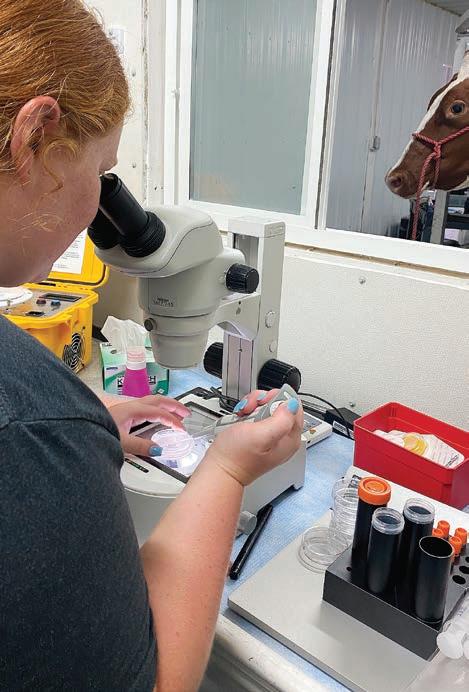
put on the bull, and the cow ‘was what it was’. That has changed; we encourage farmers to rank their herd according to genetic merit and select their donors carefully.
“The beauty of IVF is that while you are still producing from the top percentage of your herd, you can produce embryos from those cows and place them in brought-in recipients or use your lower performing cows as recipients.
“For example, farmers can take the bottom 40% of their herd and use them as recipients: they know those cows have good attributes in the breeding herd but are not as strong genetically. This strategy allows the top-end genetics to be put in the bottom end.”
Donoghue says IVF is also a good use of high-value semen.
“In the lab we can fertilise a lot of eggs with one straw of semen; we can usually produce up to 20-30 embryos with one straw of semen,” he says.
“Farmers continue to have full control over their breeding decisions and select which semen is used with a particular donor.”

Research into sprain and strain injuries over calving has identified some simple ways farmers can reduce injuries on dairy farms.
The three-year DairyNZ project, funded in partnership with ACC’s Workplace Injury Prevention programme, is researching the causes of sprains and strains on dairy farms – and developing practical solutions to reduce injuries.

“Around 40% of injuries on dairy farms are sprains and strains, with the highest risk from August to October. As calving progresses, fatigue can set in and increase injuries,” says DairyNZ senior scientist and research lead, Dr Callum Eastwood.
As part of the Reducing Sprains and Strains project, 370 farmers were surveyed on how they managed health and safety, and whether injuries had occurred.
“We know farm teams are working outdoors, in milking sheds, with animals and vehicles. The nature of their work means there is a risk of injury, particularly in busy times. Farmers reported injuries from lifting calves or buckets, from uneven ground and getting off motorbikes. In the milking shed, slippery surfaces and tripping on hoses are hazards,” Eastwood says.
Farmers surveyed use a range of strategies to avoid injury. These included sharing calf collection duties across the team, using a specialist trailer to transport calves, and piping milk into calf feeders
Piping milk to calves is one of the strategies Cambridge dairy farmer Ashlea Kowalski is using to reduce the risk of injury on-farm.

rather than using buckets. Other tips include tucking hoses away in the shed and using footwear with a greater grip.
Cambridge farmer Ashlea Kowalski and husband Andy contract milk 245 cows and they are using many of the strategies farmers recommend.
“I work full-time and we don’t have any staff, so it’s really important we both stay well to keep the farm running,” she explains.

“By piping milk to calves we can avoid lifting buckets and we’re able to feed 160 calves within 15 minutes. It’s a really efficient way of feeding. Our calf trailer is also a good height for us, and we have trolley jacks on our calfeteria to avoid heavy lifting.”
The couple have the milking area welllit and keep hoses out of the way when not in use.
“It’s a good idea for farmers to get together with their farm team and assess what the risks are from calving and how to reduce these next season. Many safety strategies farmers can adopt are low cost, are easily adopted and are good for business as well,” Eastwood says.
Virginia Burton-Konia, ACC manager – workplace safety, says farmers believe many injuries are avoidable.
“On average, the survey showed people who were injured needed 12 days off work, but took around 27 days to fully recover,” she says.
“With farms often short-staffed, new ideas to avoid injuries and make the job easier will ensure everyone can help out at the busiest time of year.”
The next stage of the project involves developing prototype options farmers can use to reduce injuries. A calf pick-up trailer designed to reduce back strain is being developed for farmer feedback.
The project is part of work underway through a dairy sector strategy called Great Futures in Dairying to attract, retain and grow the dairy farm workforce over the next decade by developing great jobs, great people and great workplaces. n
To find out more about the Reducing Sprains and Strains project, and view videos with tips on reducing injuries, see www.dairynz.co.nz/calving-safety
Sam Whitelock Farmstrong AmbassadorResearch shows tail damage in cows is on the rise but the reasons behind the increase are still being investigated.
Results from the first largescale study into tail damage from different regions across New Zealand have been published. Researchers found across the four years they studied the subject that the frequency of tail damage has been increasing, but it is not clear what the causes are.
Tail damage is increasingly a welfare concern but until now there has not been any robust data on the issue.
Peter Moono led the research while he was an epidemiologist at VetSouth.
“Our research is just the start. The sector is keen to better understand the issue and identify the risk factors involved,” Moono says.
There have been several high-profile prosecutions in NZ in recent years but Moono feels it is a difficult topic to analyse with the lack of research and understanding.
“In our study, we commonly saw up to 20% of the herd having some form of damage to their tails, so although we expect it should be 0%, that’s not what is seen on the ground and we need more information to help understand what realistic expectations are.”
The study used data from the animal welfare monitoring programme WelFarm. Farms that are engaged with the programme through their veterinarian are offered an annual tail audit, where every tail is inspected by a
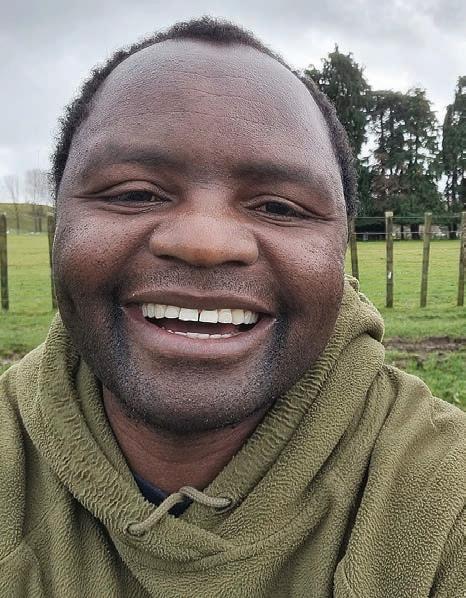
veterinarian or technician, and injuries are classified according to a standardised classification. The programme provided data for more than 54,000 head of cattle spanning four seasons.
“All farms in the study had some proportion of cows with some form of damage to their tail, which was consistent with the results of a study in Ireland that reported 90% of their study farms had cows with damaged tails at each of two visits,” Moono says.
“And we found there was variation between regions and wide variation between farms.”
The researchers were primarily trying to find out how many cows had deviated tails, but they were also looking at how many cows had shortened tails or tails with soft tissue or any other form of damage.
Tail amputation, or docking, is generally assumed to have formerly been carried out as routine management practice on farms. It was largely used as an aid in the control of leptospirosis, and it was also thought that udder hygiene pre- and post-calving could be improved by docking tails. But tail docking in any form was made illegal in New Zealand in 2018.
It is thought that shed design or management factors may be important in influencing the incidence of tail damage. Staff training could be another factor. But it is hard to determine exactly what is having an impact and what the risk factors are. There were no welfare breach investigations underway for any of the farms in the study.
“In our conclusion, we recommended further work to be carried out to explore individual farms, following animals across multiple seasons to help determine what could be causing the problems,” Moono says.
the movements it would be easy to track when and where the problem is occurring.”
In the published research, it is proposed that tails need to be monitored at least annually from early life to determine the high-risk age when tail damage is likely to occur. This is supported by many veterinary clinics that now offer a tail scoring service due to the increased focus on animal welfare.
Another four-year study into tail damage, this one supported by the Ministry for Primary Industries’ Sustainable Food and Fibre Futures, is also underway. It is driven by veterinarians who are trying to answer many of the questions surrounding tail damage, including trying to determine the causes of specific injuries and what changes may improve outcomes.
“We hope this work will assist the New Zealand dairy and veterinary sectors, as well as the regulatory authorities to engage and support a national approach to tail scoring,” says Mark Bryan, veterinarian and managing director of VetSouth.
Research has found that up to 20% of cows in the herd studied had some form of tail damage.
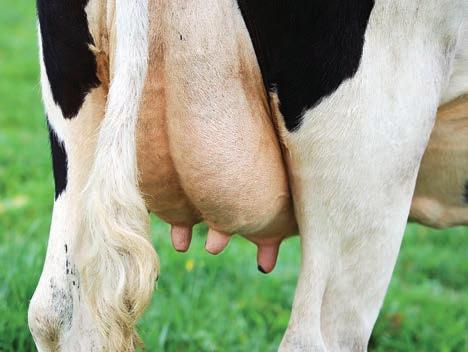
“Cows can move a lot in their life, spending time at grazing, for example, and because we don’t know where the problem is coming from, if there was some work into checking between
“This will give all stakeholders access to meaningful benchmarks and encourage them to take further steps to understand and minimise the risk for tail injuries in dairy cattle.” n
Malcolm Ellis is proud to say he’s a passionate herd testing advocate. As a member of LIC’s Senior Leadership Team, you’d hardly expect him to say anything else. But there’s truth to his zeal.
Now that New Zealand has reached peak cow, there’s a shift in focus from the ‘cow’s a cow’ growth years of dairy to the era of ‘every cow counts’. The data farmers get from herd testing is more valuable than ever.
Malcolm says it’s all about getting the front end right as much as it is identifying and removing poor performers.
A fourth-generation dairy farmer and the son of Jersey breeders, Malcolm remembers the LIC herd tester coming out to the farm once a month and even staying the night after a long day’s graft. It was social as much as it was vital.
Back then the focus was largely on lactation averages and how the herd test went was important stuff to his father.
“By throwing a spotlight on the variation of performance and production efficiency within the herd asset, you can identify cows that you trust with creating the next generation.”
That selection pressure is a critical part of the breeders’ equation that fuels the rate of genetic gain. Breed from the best, to gain the faster results – in other words.
With so much pressure on farmers to farm more sustainably, maximising our outputs while minimising the pressure on our land and resources, Malcolm thinks herd testing is part and parcel of modern day dairy farming.

Talk to your Agri Manager about regular herd testing so you can accurately identify how your cows are performing.

Breed better cows, faster. Book in for regular herd testing to gain crucial insights today.
There's always room for improvement
Given the usually challenging climatic conditions experienced on most New Zealand dairy farms during spring, the average farmer certainly expects a lot from their cows. There are many challenges that dairy cows face over the coming months, from calving to early lactation, through to the end of mating season. This all happens within a very tight window of time.
A combination of high-energy feed, adequate fibre and a finely balanced mineral supplementation programme is critical in the life of a productive dairy cow, especially given the stresses inherent in modern dairying.

Generally speaking, while the energy and protein levels of the pasture may improve as the season progresses, the mineral levels in lush green spring pasture are often very low, and can reach their lowest level in the spring to early summer months. Cutting minerals at such a critical time can be likened to saving cents while sacrificing dollars.

Concentrating on mineral supplementation alone during the months of early lactation through to the end of mating is a problem that can result in cows losing their pregnancies instead of thriving with them.
Over the past couple of decades as the productive levels of dairy herds have kept climbing, empty rates seem to have increased at a similar rate. Given the increases in the stress we are placing on these highly productive animals
and without any major modifications in the feeding and supplementation regimes, these problems are expected to continue. Research in this area to date has highlighted that conception is relatively easy to achieve. Even under NZ conditions most cows will conceive on the first service. The real challenge is ensuring the cow receives adequate nutrition in order to maintain this initial pregnancy.
There can be many factors involved in losing what started as a successful
pregnancy and there are particular risk factors in the first 100 days following pregnancy. Successfully carrying the foetus through to full term is quite a balancing act. It requires the correct level of energy, which in turn requires a diet that supplies a balance of protein, carbohydrate and, in the case of a ruminant, good quality fibre. A correctly balanced ratio of minerals and vitamins is also a critical factor in maintaining the very tightly balanced ratio of hormones required in early pregnancy.
We know through testing of feeds that no single feed comes close to being balanced. No single feed supplies all the minerals adequate to the needs of lactation, let alone the demands of pregnancy.
Mineral premixes are fully formulated blends containing both macro as well as trace element salts. They can be built specifically to balance your feed requirements, and can be produced in both soluble and insoluble trace element blends. n
Tail damage is painful for cows and research shows an average of 20% of dairy cattle in New Zealand, approximately one million cows, have abnormal tails. Some of these have been shortened for medical reasons or were shortened before it became illegal, and some have been damaged or have some form of deviation.

“Tail breaking” is one of the most common cattle-related welfare complaints to go through courts in NZ. But the definition of a “broken tail”, leaves us apprehensive when it comes to talking about tail damage.
Given the high prevalence of damaged tails, the lack of understanding of the cause and the public focus on tails, having a regular tail score is an important step towards managing any risk on farms.
Just like other monitoring systems already in place, for example herd testing and BVD bulk tank monitoring, tail auditing provides farms with valuable information.
Monitoring allows farms to create a benchmark and identify any mechanical or handling issues. It also allows the farmer to track whether tail damage

occurs on farm or off farm at grazing, for example. Some tail damage, especially around the switch, can be hard to see and may go unnoticed unless a tail score is carried out.
Tail scoring is a good start to reducing the incidence of tail damage on farm and should be carried out at least annually. If the herd is scored as soon as the heifers enter or after changes in the farm team, it is possible to establish a timeline of when tail damage may be occurring and identify if there are any yarding or handling issues, or if there could be issues with machinery in the milking shed.
Tail scoring is carried out by a trained veterinarian or technician who will record any visual tail deviations or shortening, amputations or dockings, and if they can feel any traumas or swellings. And farmers can get a detailed report back with the results alongside the cow IDs.
After a tail score, if the farmer or the veterinarian has any concerns they can work together to put a plan in place to reduce any damage or injuries that may be occurring whether they are from the infrastructure or the handling techniques. The farm team is the best to identify where the challenges are, and can work with their vet to find solutions to avoid more injuries.
Tail scoring information can be captured within the WelFarm programme. From the 2021-22 season we saw 81% of the farms enrolled in WelFarm had a tail score performed on their herd. The average number of cows with an
Tail scoring is a good place to start when it comes to reducing the incidence of tail damage on farm, and should be carried out at least annually.
abnormality detected was 23% but the range was significant, from as little as 2% to as high as 80%, which was an outlier.
The predominant cause of abnormality in our data is a deviation at an average of 10% with a range of 0% to 45%. And there were 7% shortened with a range of 0% to 69%, and 6% of tails had a swelling or trauma noted with a range of 0% to 28%. n
Find out more about WelFarm and tail scoring at welfarm.co.nz
Samantha Tennent is the general manager of WelFarm.

After Janneke van Wagtendonk, Managing Director for AHV NZ, explained how the AHV udder support solutions work, I bought a bucket of Quick, Extra and Aspi boluses each and used them on cows with deviating milk values. AHV also analyzed my herd test data and we looked at the history of each cow and prioritized what cows to support first.’
The AHV Udder Health Program supports your animal’s natural resistance for production, longevity and development of the herd. I am very happy with the results and that cows can remain in the milking
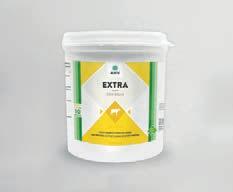
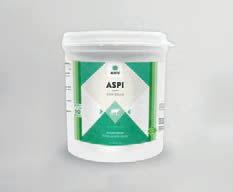
herd after the boluses, which means less hassle and no risk of mistakes to be made by me or my staff.
James Dallinger, Dairy farmer from MaungatautariFor further information head to www.ahvint.com/nz or contact the team on 0800 424 869
‘‘A NEW WAY TO KEEP MY ANIMALS
There’s an exciting future ahead for those wanting to be involved in the food and fibre sectors in New Zealand and internationally. Students are seeing studying ag/hort science, agribusiness and primary industry courses at St Peter’s College in Cambridge as worthwhile options as the continued labour shortage becomes more evident.
Gone are the days when ag/hort was known as a drop-out subject and you were “just a farmer”.
The non-farmers are starting to appreciate the plethora of skills needed to own, operate, manage and work in any primary sector business.
At St Peter’s and many other secondary schools in NZ, specific courses are being designed to give students the opportunity to understand what the different primary sector involves. Practical skills, research, innovation, field trips, competitions and work experience opportunities are a few of the aspects of the different courses.
As more students choose ag/hort as an option in the junior years, it has become evident at St Peter’s that appropriate courses need to be designed to cater for student needs and interests and to show the many different employment opportunities that are available post school.

St Peter’s currently offers 10 curriculums over 16 classes to 330 students ranging from ag/hort science as an option in years nine to 13; agribusiness options in years 12 to 13; and a practical
primary industry skills option in the same senior years.
Some students choose to complete several of these options at the same time as they are determined to be part of the primary industries once they leave school. It is important that there’s an opportunity to be both practical and academic. Supporting students for afterschool decisions is an important aspect of our philosophy at the agri centre. The extensive pathways we offer are driven by industry demand.
Currently the demand for motivated, hardworking and educated people in these industries is very large, both within New Zealand and internationally, as the stress of feeding an expanding population continues to grow.
Whether students choose a more hands-on after-school education such as Growing Future Farmers or are university oriented, we try to support them by giving them experiences inside and outside the classroom.
Tertiary institutions are promoting new courses to encourage students into agribusiness industries. Students tend to merge to Lincoln and Massey universities to continue with their agri studies.
Choosing a pathway post school for students can be incredibly daunting and students are challenged with finding information from so many different sources over so many industries. Marketing and social media seem to have a huge influence over the pathway they take.
This is a space that needs to be
worked on by industries to promote the opportunities and more importantly the pathways that their industries offer. It is a competitive market. Students are wanting to be part of the food and fibre sectors, but at the moment the pathways are hard to find.
An initiative we are exploring at the moment is getting students on working placement on local dairy farms. This may be a short stint for simple exposure for
The head of St Peter’s agricultural and horticultural department, Rebecca McGuire, says more students are choosing to study ag/hort. The school offers 10 curriculums over 16 classes to 330 students in years nine to 13.

student who may not have been on a dairy farm, or a longer stint throughout a term for a student who is more experienced and wants to learn the everyday running of the farm.

We have started this experience on Owl Farm for selected students and have had other farmers and industries approach us to be part of this initiative. It would be great to have this offering for the majority of industries. Students’ choosing university or going straight
onto the farm or into the orchard is a decision they do not take lightly. For either decision, it is helpful for them to have some experience of how the product is produced, paddock to plate.
Having Owl Farm on our classroom doorstep helps students identify and understand the theory they are taught in the classroom with the practical application. We are very lucky to have this and are continually tweaking courses to make the most of the farm. For example, this year the farm introduced the Halter technology. Students got to study the technology, see it in action, study the major influences of investing in such a technology and got to use the app and shift the virtual fences and release the cows onto their new break.
They also get to see traditional management practices such as weighing, vaccinating and drenching and the importance of such practices in meeting weight targets and budgets.
The agribusiness programme we offer gives students opportunities to understand and see in real life some of the decisions agribusinesses have to make. Understanding future-proofing


ideas, creating cash flows and looking at innovations to help farm sustainably are some of the units we cover.



We offer substantial programmes at St Peter’s to support the future of the food and fibre sectors New Zealand relies on for domestic and export products. The labour shortage currently being experienced in the primary industries is an indication of where possible employment opportunities will be for our students both in NZ and internationally.
From practical hands-on experiences to in-depth studies on sustainable farming practises and innovation, our students have many pathways to experience. n

“Choosing a pathway post school for students can be incredibly daunting. This is a space that needs to be worked on by industries to promote the opportunities and more importantly the pathways that their industries offer.”
The agricultural industry needs more passionate and skilled people to keep the sectors ticking over.
The depth and breadth of New Zealand’s food and fibre sector are set to be showcased at this year’s Fieldays at the Opportunity Grows Here Careers Hub.

The hub, which was created in partnership between Fieldays and the Ministry for Primary Industries, is an engaging platform for attendees to learn about food and fibre career pathways and consider joining a thriving sector.
The hub will be a hive of activity, with education providers and sector groups teaming up to showcase the industries that have led NZ’s recovery from the global pandemic.
NZ National Fieldays Society chief executive Peter Nation says the hub is an important part of its mission to advance agriculture.
As such it sits under Fieldays’ strategic pillar of education.
“As the southern hemisphere’s largest agricultural event we have a duty to help futureproof the sector through educating people on where the opportunities lie in food and fibre.”
MPI director-general Ray Smith says the primary industries have grown despite the covid-19 pandemic.
“New Zealand’s food and fibre sector is leading the nation’s recovery from covid-19 by keeping vital food and fibre flowing domestically and overseas. For the first time, annual export revenue reached more than $52.2 billion in the year to 30 June 2022.”
This growth highlights the urgent need for skilled and passionate food and fibre workers.
Opportunity Grows Here addresses this need through connecting people with exciting careers in food and fibre, which will be further facilitated within the hub.
“With such a key sector contributing to the New Zealand economy and the wellbeing of our rural communities, it’s important we have the necessary workforce to meet the demand,” Smith says.
Food and fibre careers range from work on farm, in science, technology, business management, and logistics, to animal welfare, marketing, and research and development in locations across the motu.
Smith says those considering a career in food and fibre will be joining a sector they can be proud of, as NZ export products are highly sought after.
“New Zealand has a proud history of producing high-quality, innovative, and world-class food and fibre products, with care for people and place remaining front of mind.
“We export most of what we produce, and our food is demanded and enjoyed in more than 130 countries around the world – for a small country at the bottom of the South Pacific, this is pretty impressive.”
Running alongside the hub is a careers trail for visitors to follow around the Fieldays event to showcase career options and vacancies, a speaker and engagement series, and a jobs board where visitors can see available food and fibre roles.
School groups interested in visiting Fieldays can receive the discounted entry price of $10 per student. Further details are available on the Opportunity Grows Here website. n
Opportunity Grows Here Careers Hub this summer, from November 30 to December 3. Scope out the wide range of exciting career options at www.opportunitygrowshere.nz/ and visit Fieldays 2022.
Dairy Training, a subsidiary of DairyNZ, is offering a range of free training courses across New Zealand, including online options.
Among the courses is Progression Management, which is aimed at assistant managers and managers, and covers the management skills needed on a busy farm. It helps manager’s upskill in their current role; get up to speed with computers, tools and technologies; and improve their financial management skills.
With increasing costs, the Business by the Numbers course is a great way to stay on top of farm finances. The course covers farm budgets and future options to help achieve farmers’ longer-term goals, like self-employment or growing their sharemilking or farming business. It’s open to people with all levels of financial management experience – including those new to managing budgets.
Writing a business plan might sound daunting, but the short course Write a Business Plan steps farmers through the process. The course helps farmers clarify their business and personal goals, and complete a business plan in class. At the end of the course farmers walk away with a five-year business plan.
The Contract Milking training workshops are suited to both current and future contract milkers and sharemilkers. They cover contract responsibilities, assessing the viability of contracts, and help contract and sharemilkers navigate potential risks to achieve their goals. n

• Business by the Numbers –starting dates: online November 3, Matamata November 8, Temuka, Canterbury November 2, and Southland (10 November)

• Write a Business Plan – starting dates: Reporoa November 17, Canterbury (2023) Southland (2023)
• Progression Management –see dairytraining.co.nz for more information on this course


• Contract milking – starting dates: Dunsandel November 1 and Stratford November 3
SHEDLINE® is a leading New Zealand brand in durable PVC dairy shed aprons and milking sleeves. SHEDLINE® is dedicated to providing the benchmark for personal hygiene protection in and around the milking shed.




When a passion for cows grew too strong for one townie, she took the Primary ITO route to a better career on farm.
Dairy farmers engaged in training with Primary ITO constitute the biggest single sector in terms of people studying. In the past year 5731 people in dairy farming undertook some form of study and completed 1833 programmes, and overall 18,000 people have engaged in training across 21,000 programmes.
Primary ITO aims to help New Zealand’s primary sector flourish by growing people’s skills through leading work-based education and training across the many industries in the primary sector. A spokesperson for Primary ITO said the organisation supports on-thejob training, which it believes is the future of learning.
Learning can be supported by online and in-person delivery where those are the best options. People earn while they learn, and businesses get value from their staff from day one. Support is provided from start to finish right
through from introductory programmes and the schools-based Trades Academy, through to apprenticeships and management diplomas.
“At Primary ITO we pride ourselves on being up driveways, at the end of dirt roads, on the factory floor, online or in the classroom. Whatever it takes to support our learners,” a spokesperson said.
“We also design the programmes that enable people to gain skills and qualifications in their chosen field.”
Laura Murdoch knows full well the value of Primary ITO, having moved from a desk job to dairy farming. She now works as an assistant herd manager for Chris Reilly on his 89ha, 250-cow Mokotua property. Earlier this year, she was named 2022 Southland/Otago Dairy Manager of the Year. She also won three merit awards for Livestock Management, People and Leadership, and Personal Planning and Financial Planning.

Growing up as a townie in Invercargill,
Murdoch had her first taste of dairying as a teenager when she tagged along with a friend who was working on a farm. She liked what she saw, but a wrist condition meant she was unable to go farming.
Leaving school, she went to work in administration and learnt accounting while on the job and gained several qualifications. She kept a small hand in dairying during this time by doing relief milking in the weekends.
It was around that time that she met a Primary ITO training adviser and asked about the programmes available.
“I wanted to get some qualifications and be as upskilled as possible. I also wanted my CV to reflect that I was qualified and competent,” Murdoch says.
In 2016 with her wrist condition deteriorating, she took a break from her accounting job and had surgery to correct carpal tunnel syndrome.
But rather than return to the office she decided to get into the dairy industry as
that was where her passion lay.



“I was relief milking on a farm and heard that one of the workers was leaving so I went and had a chat with the owner and asked him to give me a chance,” she says.
Now she is an award-winning Southland dairy farmer who loves sharing stories of the cows she works with and the industry she works in.
“I love my cows and I love showcasing them and the industry and how rewarding it is.”
She says learning through Primary ITO made her more marketable.
“I felt the training gave me a better chance at a job in the industry,” she says.



“I realised that if I wanted to get into the industry, I needed a piece of paper to say I had done these courses and had learnt so I could be as competitive as possible against other applicants.
“I have a passion for learning, progression and animal welfare, as well as excellent best-practices for farming in general. And I wanted to be the best employee for a good employer.”
She began studying the Primary ITO Milk Quality One programme and Animal
Husbandry Level 3 at the same time. “From there I just started smashing out programmes.”









Her CV now includes a list of qualifications she’s completed through Primary ITO, often studying two programmes at once. Most recently she completed the New Zealand Diploma in Agribusiness Management (now known as the New Zealand Diploma in Primary Industry Business Management) and Level 5 Primary Industry Production Management at the same time.

She puts her success down to being given opportunities to learn and grow in the industry and says the casual environment in which she learnt was a lot better than school.
“It was great to meet like-minded people and bounce ideas off each other. That was really invaluable.

“I would not be where I am today if I did not have the help from Primary ITO. They do so much for those who are wanting to learn. My tutors have been really awesome, especially my main tutor who challenged and pushed me to achieve more so that I am the best person that I can be. For me and my job that has paid off.”
She aims to be a leader in the industry and inspire others with her journey and the joys of dairy farming. She has popular Facebook and TikTok pages where she shares her mahi and love of cows.
“I’d love to showcase the joys and highlights of dairy farming, it’s a very rewarding industry to be a part of.
“I love my cows. It is just me and my manager here, so my cows are my workmates and friends – they are massive cuddly dogs really.” n
Work-based learning provides your team with a solid knowledge-base to confidently undertake their job and set them (and your business) up to be successful.



New to farm? The New Zealand Certificate in Primary Industry Skills (Level 2) builds their foundational dairy farm skills and includes the option to add vehicle skills (e.g. tractor, quad bike, LUV, motorcycle).
Farm Assistant? The New Zealand Certificate in Agriculture Dairy Farming (Level 3) covers all seasonal activities throughout the year. Whether that’s calving, mating, feeding, optimising milk quality and dealing with effluent, the topics align with the whole farming calendar.

Herd or Assistant Manager? The New Zealand Certificate in Agriculture Dairy Farming (Level 4) is a comprehensive programme that will enhance their skills to progress their careers and to take the lead on implementing production plans.




Already have staff enrolled? We have recently transitioned into Te Pūkenga, the New Zealand Institute of Skills and Technology, that brings together on-the-job, on campus, and online learning. Rest assured that you can expect to see your same trusted Training Adviser to support your business and your team.
To learn more about work-based learning on-farm, contact your local Training Adviser on 0800 20 80 20, visit www.primaryito.ac.nz or email info@primaryito.ac.nz
“At Primary ITO we pride ourselves on being up driveways, at the end of dirt roads, on the factory floor, online or in the classroom. Whatever it takes to support our learners.”
People entering the dairy industry can now get the skills they need to succeed on farm without getting into debt.
Atraining model with an innovative approach has been launched for the dairy sector to equip people new to the industry with the practical and online skills they need to succeed in the early years of employment.
Get Milking, which is powered by agricultural training organisation Agricademy, offers online and on-farm courses targeting the next generation and the way they learn.
There are no classrooms, no campuses and no student debt. The online and on-farm training is intended to provide a practical pathway from study to work and build skills quickly. This will appeal to farmers who need trained workers, and also to students who want the right skills for the dairy industry but do not want to be back in a classroom.
Get Milking courses develop the practical skills needed to operate effectively in the sheds, be part of a team, reduce costly mistakes and increase productivity.
Anyone new to the industry who wants to become a relief milker or dairy assistant can take a Get Milking online course, which includes short, professionally shot videos, so they are familiar with what to expect on a dairy farm. They are then offered on-farm training with an accredited trainer so they get practical, hands-on experience.
Managing director Alister Shennan founded Agricademy and Get Milking as he could see the industry was not getting the training it wanted and young people were not gaining the skills they needed to do well.
“There needed to be a complete rethink of agricultural training so that it works for the generation who live online and connect via social media but who also need hands-on training on farm,” he says.
He says vocational training that is classroom based does not work well for industries where practical skills are needed.
“Delivering online courses, including these task-by-task short videos, allows this next generation to access the information they need in a way they want, and they can learn from the best 24/7, at any time and anywhere. It is an innovative approach and a step forward for the way training is offered,” he says.
“We then use accredited trainers to provide practical training on the farm to build the skills needed to become a dairy assistant or a relief milker. This happens quickly without a farmer having to backfill or send workers off to classrooms.”
Get Milking courses will be delivered in Waipa by Agricademy’s first licensee, Regan McCorquindale, who grew up on a dairy farm and has his own farm consulting business, RECO.
“One of the challenges in dairy is that
Managing director Alister Shennan set up Agricademy and Get Milking as he could see the industry was not getting the training it wanted and young people were not gaining the skills they needed to do well.
you’re often relying on the employer to do all the training when farming is very busy and often understaffed. People aren’t getting the training required to progress in the industry, which leads to a lot of churn,” McCorquindale says.

He says he became a licensee because the dairy industry needs the combined online and practical training Get Milking delivers.
“I think Get Milking’s online component is essential – when you come to a farm you’re familiar with the way that the cowshed works, the cupping works, the whole process from start to finish,” he says.
“That is then backed up by having a trainer come to a farm so workers are getting on-farm training in the shed that they’re most familiar with.
“It makes for faster learning and
getting ahead in our industry”.
Shennan says Get Milking is now looking to attract great licensees in other parts of the country.
“We know that the right people grow everyone’s business, and having licensees who are connected to their community, who are passionate about dairy and training, will provide a muchneeded pipeline of trained workers for the industry,” he says.
McCorquindale says the dairy industry offers many great opportunities for those willing to work hard but the rewards need to be sold to those who would enjoy it and could build a career.
“We want to see young, enthusiastic people enter our dairy industry. It’s a great place to work but we need to increase the awareness about how good the opportunities are so we get the right people wanting to be trained,” he says.
“Farm owners are giving workers who are showing enthusiasm and willingness to do the job lots of opportunities, and I want more people to know about that and come on this journey with us, so let’s Get Milking, and make it a success story for the industry.”
Get Milking courses will be delivered in Waipa by Agricademy’s first licensee, Regan McCorquindale, who grew up on a dairy farm and has his own farm consulting business, RECO. Regan meets the team on farm.

Shennan says Get Milking as a name and brand was deliberately chosen to emphasise the positives about the
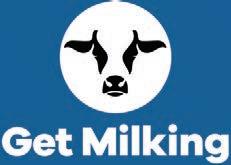
country’s largest industry, and what it delivers for those who work in it and all New Zealanders. n

The right people grow everyone’s business. Become a licensee for Get Milking.
Find out about becoming a licensee in your area: Alister Shennan - 027 302 3713 alister@agricademy.co.nzagricademy.co.nz/licensee
The dairy sector has launched a new workforce plan setting out how it will attract, retain and grow the farm workforce in the next decade.
The Great Futures in Dairying plan is the sector’s strategy for shaping dairy farming as a competitive career option through a range of workplace and technology advances.
“Dairy farms employ 37,000 people on farm. The success of dairy is critical for those working in the sector and to New Zealand as a whole,” DairyNZ chief executive Dr Tim Mackle says.

“New Zealand is facing significant social changes, which will require many businesses to work harder to attract and retain staff. These include an ageing population, increasing urbanisation, wider career options, lower fertility rates and technological change.”
Mackle says these trends mean the dairy sector needs to be forward-thinking and develop fresh ideas to attract and keep the right staff.
“Farmers are resilient and practical people, and we know they are focused on
finding solutions to this challenge.”
The Great Futures in Dairying plan is led by DairyNZ in partnership with farmers, the government and farming sector representatives. The plan identifies three key focus areas to make dairy a competitive career option.
“As a sector we firstly want to shape up to ensure we are attractive in an increasingly competitive labour market. We are looking at a range of initiatives, including piloting an induction experience for new dairy staff and developing clear career training pathways for people to progress into more senior roles,” Mackle says.
The second focus area – changing the job – looks at embracing new technology and strategies to improve workplaces. Smart cow collars, milking cup removal technology and flexible milking are some initiatives proposed to provide staff with a better work-life balance.
“Lastly, we want to look in new places – like Pacifika communities, women and people with disabilities – for our dairy teams to draw on a larger and more diverse talent pool,” Mackle says.
2021 Ahuwhenua Young Māori Farmer of the Year Quinn Morgan is one of the farmers supporting the new plan.
He grew up in the city and previously worked in the fitness industry. Now he manages a team of eight on a Taupō dairy farm.

“For people who aren’t familiar with farming, it can feel intimidating to consider applying for a dairy job. So, it’s awesome that the dairy sector is looking to encourage a wider range of people to work on farms,” he says.
His team is already focused on developing their skills by using online video learning, and they are looking forward to welcoming a staff member who is new to farming soon.
Taupō farm manager Quinn Morgan is a big supporter of the plan and says it is great the sector is working on attracting new people.
Taranaki farmer Hayden Lawrence is one farmer who is embracing new technology with his farm team.
“We use a project management platform which allows our team to see and manage farm tasks. This gives us the flexibility to better manage workloads
DairyNZ chief executive Dr Tim Mackle says the success of dairy is critical for those working in the sector and to New Zealand as a whole.
to avoid too much overtime,” Lawrence says.
He says it is a priority to support his team to upskill themselves so they can move into more senior roles in the sector.
Mackle says that the Great Futures in Dairying plan is ambitious and will require contributions from many organisations to succeed.
“We already have some of the initiatives in the plan underway – like our GoDairy recruitment campaign. The next step will be working with other stakeholders to secure funding for other projects and plan their rollout. We hope to see the government get behind the plan, as the dairy sector is vital to New Zealand’s future.” n
MORE: To read more about the Great Futures in Dairying plan view the plan at https://www.dairynz.co.nz/
Massey University offers short courses for farmers looking to understand and comply with new freshwater farm regulations.
Freshwater farm plans are on the horizon, and many farmers and agriculture professionals are realising that furthering their knowledge about how to implement those plans is an essential part of their business.
Massey University has been operating intermediate and advanced Farm Environment Planning courses for two years. The courses provide students with the detailed knowledge and integrated skills necessary to produce New Zealand industry-standard, farm-scale, freshwater Farm Environment Plans for dairy, beef and sheep and arable farms.
The intermediate course is delivered through online distance learning and intended to facilitate a flexible learning style. It consists of approximately 100 hours of online study including 50 hours of self-timed learning activities, 48 hours of assessed learning, and approximately 1-2 hours of video conference tutorials and assessment.
The Advanced Farm Environment Planning course equates to approximately 150 hours of work and is designed for online blended delivery. Four hours are designed for self-timed access, two hours are scheduled for Zoom tutorials and 24 hours for “in person” farm engagement visits on dairy, arable and sheep and beef farms. The participants then leave and develop their own freshwater plans.
School of Agriculture and Environment Associate Professor Lucy Burkitt coordinates and teaches the intermediate and advanced Farm Environment Planning professional development courses.
The Farm Environment Planning course focuses on teaching students the skills to develop freshwater farm plans.
“Many participants are considering a career change or looking to become more involved in freshwater farm planning. Some realise that they need to upskill in their current role,” Burkitt says.
“Farmers are beginning to attend.
School of Agriculture and Environment Associate Professor Lucy Burkitt says farmers need to keep ahead of the curve so they’re not blindsided by new regulations and requirements.

Some are fulltime farmers and others also take on consulting work. The recently released Cabinet paper has clarified some of the freshwater issues and requirements, but it’s not totally clear cut.”
Many of the participants are already comfortable with nutrient management. The course also covers the regulations, Te Mana o te Wai in the catchment context, and cultural community values associated with waterways on or near the farm.
The course aims to have the participants in an advantageous position when the freshwater regulations are implemented. While it’s still unclear what the new plans will involve, the courses will be modified when the situation is clarified.
This year a freshwater ecology component has been added to the courses, based on developing information provided by the Ministry for the Environment.
“The intermediate course has a virtual farm tour and the students then produce a farm plan based on it. We’ve put a lot
of time and effort into the videos, spatial information and flyovers,” Burkitt says.
“The course focuses heavily on the farm’s natural resources and how they influence the risk of contaminant loss. Many people seem to find this aspect very valuable and have never realised its importance.
“Farmers need to keep ahead of the curve so they’re not blindsided by new regulations and requirements. Knowledge is power, and if they understand what’s going to be required they’ll feel much more comfortable.”
Taranaki farmer Donna Cram recently took the Intermediate Farm Environment Planning Course. She and her husband milk 280 cows on their 117ha Auroa dairy farm.
She is the chair of Taranaki Catchment Communities, on the executive of Taranaki Federated Farmers, and has just been elected to the Taranaki Regional Council.
Cram wanted to gain an understanding about the issues for her farming business and understand their implications, and mitigate their risks surrounding freshwater.
“I also wanted to understand how we could help our farmers understand more about fresh water management and help with solutions. Being the chair of Taranaki Catchment Communities meant that I had to learn about the sheep and beef aspect too,” Cram says.
The course component on the Massey sheep and beef farm gave her a wider understanding of freshwater issues.
“The course was challenging but very worthwhile. The staff are very accessible and always replied promptly to any queries.
“Farmers need an understanding of the critical source points on their farms. They should be aware how they can mitigate these critical effects on waterways outside their farm, and that there are things they can do to improve the waterways for their entire community.” n
A team of vets have been working hard to cut antibiotics as part of the national strategy to reduce antimicrobial use in herds.
The team at VetPlus was recognised at the New Zealand Veterinary Association’s gala dinner earlier this year when they were awarded the inaugural Antimicrobial Resistance Committee Award celebrating efforts to reduce antimicrobial use among farmers.
The NZVA has an aspirational goal that by 2030 New Zealand will not need antibiotics for the maintenance of the health and welfare of its animals. The Antimicrobial Resistance Committee (AMRC) Award is all about celebrating people and organisations going the extra mile towards that goal.
“The VetPlus team has shown great commitment to the New Zealand Veterinary Association’s 2030 statement and have implemented several policies to reduce and better steward antimicrobial usage in farms around the country,” says NZVA AMRC chair Mark Bryan.

Preventative testing and monitoring are a core part of success in antimicrobial reduction at VetPlus. They offer quarterly health checks to look at all aspects of herd health as part of their HealthPlus programme. They have access to several data sources for their farms, which supports early intervention, and they work hard to help farmers set themselves up for success before major seasonal stressors such as calving, dry-off, mating and transition.
“They are showing great leadership in this space, which is important as the veterinary sector has a responsibility for appropriate use of all medicines to be used on animals,” Bryan says.
“The use of antimicrobials in both food and companion animals has been under the spotlight in recent years.
“But the profession’s 2030 goal and subsequent actions have been recognised by both the local and global community as being world leading and the work of clinics like VetPlus highlights this.
“We all need to play our part to preserve the ongoing efficacy of antimicrobials.”
One of the initiatives VetPlus implemented includes its significant progress in mastitis management through the use of various monitoring tools. Cowside and bulk milk tests provide data to develop conversations with farmers about when best to treat with antimicrobials and when to hold
back. Approximately 20% of mastitis cases tested may not need antibiotic treatment, significantly reducing the amount of unnecessary antibiotics administered.
By taking a broad approach and utilising a number of tools, VetPlus has been seeing better outcomes for its farms, as it can tailor antibiotic recommendations to the specific animal based on collected data.
It is also part of a national Antimicrobial Use Reduction project funded by the Sustainable Food and Fibre Futures Fund. The two-year project is farmer-led and designed to help farmers develop their own antimicrobial reduction strategies with support from local veterinarians.
“With so many of their own strategies already underway, it’s clear that VetPlus will be a valuable resource for this project,” Bryan says. n
“The NZ vetinerary profession’s 2030 goal and subsequent actions have been recognised by both the local and global community as being world leading, and the work of clinics like VetPlus highlights this.”
Mark Bryan
Antimicrobial resistance was blamed for 1.27 million human deaths in 2019, but there is good news from the most recent report from the World Organisation for Animal Health. The report shows that between 2016 and 2018 there was an overall decrease of 27% worldwide of antimicrobial use in animals, which is an important step towards reducing resistance.
“It’s positive progress as it shows that a growing number of farmers, animal owners and animal health professionals worldwide are adapting their practices to use antimicrobials more prudently,” Dr Monique Eloit, director-general of the World Organisation for Animal Health (WOAH) says.

“These efforts contribute to protecting everyone’s health, but much more needs to be done to preserve our therapeutic options and overcome the spread of infectious diseases.”
Released earlier this year, the report is made up of data from nearly 160 countries. The number of reporting countries is growing and the detail of the information is constantly improving.
WOAH launched the annual data collection process in 2015 and it is to date the most comprehensive set of information available on the use of antimicrobials in animals. The aim is to monitor trends in the animal health sector, as recording and analysing data on antimicrobial use is critical to fully understanding the multi-faceted rising danger.
“Providing access to solid and reliable data is a strategic priority, as it helps decision-makers identify exactly where action is most urgently needed at local level, which in turn also supports the global response to antimicrobial resistance,” Eloit says.
Overuse or misuse of antimicrobials can greatly accelerate antimicrobial resistance and it can exert selective pressure for bugs with resistance traits to survive and thrive. These ‘superbugs’ can then travel through waterways, soil and
air, infecting all living beings, regardless of their species, along the way.
“As the proportion of pathogens resistant to antimicrobials rises, the efforts of the scientific community to accelerate the development of new antibiotics and drugs to tackle ‘superbugs’ should redouble,” the head of antimicrobial resistance and veterinary products department at WOAH, Dr Javier Yugueros-Marcos, says.
“Most importantly, we need to see greater use of alternatives such as vaccines, and promote quick-wins like washing hands with soapy water, and changing clothes and boots before treating or dealing with animals.”
As the world understands more about the impacts of specific practices, behaviour is changing and the latest report shows that antimicrobials are no longer used for growth promotion in 69% of the participating countries.
“We are on the right track in the animal sector – we must now seize this momentum and continue to use antimicrobials prudently if we want to preserve their efficacy for future generations,” Eloit says. n
“It’s positive progress as it shows that a growing number of farmers, animal owners and animal health professionals worldwide are adapting their practices to use antimicrobials more prudently.”
Dr Monique Eloit
A Waikato farmer has found a better way to navigate mastitis issues in his herd and is saving a lot of money on costly antibiotics.
AWaikato farmer received a wake-up call when he realised how many orange and red antibiotics he was using once the traffic light classification for antimicrobial use came into effect.
Andrew Lord milks 800 cows north of Cambridge in Te Pahu through two sheds on 200ha. He had been relying on drugs to battle mastitis but he never felt like he was making headway. The traffic light system was the catalyst to a completely different approach to managing mastitis on his farm.

“We had a lot of mastitis and we were throwing drugs at a huge amount of cows, but many wouldn’t cure or they would have mastitis again not long after,” Lord says.
“We weren’t getting much return for the money we were spending.”
He sat down with his veterinarian, Mike Conlon from VE Vets, to see what else they could be doing to try to navigate it better and they enlisted the help of Steve Cranfield, a vet from AgriHealth.
“Steve is well-renowned as the mastitis guru, he helped us find a better way to deal with it which involved utilising Mastatest, which is a tool we have on farm to test a sample of milk from a cow with mastitis,” Lord says.
“The system emails me the results 21 hours later, before the hospital mob comes back in for milking.
“The results tell me the type of bacteria causing the mastitis and which type of drug might have a chance against that bacteria.
“It’s completely changed my perspective and we have completely overhauled how we treat mastitis.”
He has been utilising Mastatest for the past two and a half seasons on both of his farms and now every single mastitis case is tested before it receives any antibiotic treatment. Some results indicate that antibiotics will be ineffective so those animals are solely managed with anti-inflammatory pain relief to support their immune system to
fight the infection.
“We make a point of using antiinflammatories for all mastitis cases nowadays.
“There is solid scientific evidence that using pain relief gives a better return because the cow will recover faster and is more likely to get in calf.
“Cows are expected to keep eating, walking and milking, so it makes sense to support them with a bit of pain relief.”
He has found they are using next to
no orange and red antibiotics now, with fewer repeat offenders.
Before being introduced to Mastatest, he was aware of the vet recommendation to get a milk sample cultured before treating the cow but he found the logistics of getting a sample to the clinic were near impossible.
“You’d need someone to be free to be able to run it in, then you’d have to wait for the results and that could take a few days, longer if it was later in the week when you sent the sample.
“And a lot of the time the results would say the sample was contaminated so it was a waste of time anyway, the traditional method just wasn’t a viable method for us and if something isn’t practical it just doesn’t happen.
“But Mastatest is very easy and having the results emailed straight to my phone is so efficient.”
He has also enjoyed the cost saving
“Just as everyone is talking about climate change now, reducing antibiotic usage will get more and more top of mind.”
Andrew Lord
and worked out that the system paid for itself five times over in the first season he had it, from the reduced milk withholding and by not buying as many drugs.
And he connects with the big picture too, knowing there will be more and more pressure to reduce using antibiotics, in animals and people.
“Bacteria are getting less and less susceptible to antibiotics, we’ve certainly seen it in our results that the bacteria we have are a lot less susceptible to some of those common drugs, like cloxacillin, we used in the past.
“Just as everyone is talking about climate change now, reducing antibiotic usage will get more and more top of mind.”
He is a big advocate for the testingbefore-treating method and promotes the value it can offer to help farmers combat their mastitis challenges.



“If you don’t know what you’re treating and what they’re susceptible to, you’re really just shooting in the dark. It’s certainly worth considering a different method, and it pays for itself pretty quickly.”
n

Within 24 hours Mastatest identifies the bacteria in mastitis milk and the most



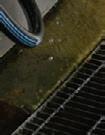
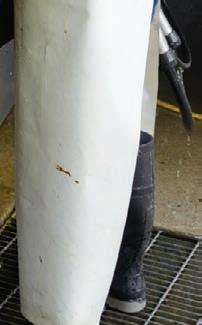


Birds in a dairy shed or calf-rearing area can gobble down leftover feed in significant quantities and leave behind a contamination hazard. A company proposes using microlasers to scare them off.
The presence of birds in dairy sheds and calf-rearing areas is a health and hygiene hazard. The days of allowing welcome swallows to nest in the tank stand are long gone. Faecal contamination by birds in dairy shed feed troughs is a disease hazard, without taking into account the amount of leftover grain and pellets the birds consume. The common house sparrow weighs 24g-39.5g and most birds consume between 25%50% of their body weight in food every day. The amount of leftover cow feed consumed by birds quickly multiplies if bird numbers are in the hundreds.
Roger Cherry’s company, Birdscarer NZ, is using micro lasers to deter birds from congregating in farm and industrial buildings. The lasers emit various types of light to deter birds from areas where they’re unwelcome.

“When you mention lasers people can become quite disturbed, but they’re very safe when used in a correct and appropriate manner. The lasers we typically use aren’t the pinpoint types. Ours utilise a high-speed scatter of laser light that is never fired into people’s headspace,” says Cherry.
“All we’re doing is disrupting the bird’s roosting location. When there’s a food source, such as a bulk storage facility or dairy shed, the birds always fly to a high point.
They sit there until they know that it’s safe, before flying down to the food.”
If people work in a building, the lasers operate in the building’s headspace. When the units are installed in a dairy shed they’re very well signposted at the shed’s points of entry.
To remove any element of risk the units are turned off with a very simple isolation switch before entering the shed.
“The units are turned off when the shed is in use and when maintenance is being undertaken. But as a rule, when people or cows are in a shed, the birds aren’t present,” says Cherry.
“There can often be up to 500 birds in a dairy shed if it has in-shed feeding installed and there’s no activity occurring.”
The laser units are leased to farmers and business owners and the system can be
quickly installed using bolt-on fittings.
“The leasing agreement and regular maintenance ensures that the system keeps working as designed and eliminates user error. The system lease costs about $200 per month, which includes three-monthly inspections.”
This can be quickly recouped due to the amount of feed that is saved, says Cherry.
“Realistically it won’t cost you anything to lease a laser unit because by doing so you vastly reduce the amount of lost food.”
The laser beams scatter past the birds’ eyes, causing them to spook and leave.
“Eventually it disturbs the birds so much that they begin staying away. In most dairy sheds the laser lights refract off the stainless steel plant, feed troughs and iron, which multiplies the effect.
“A major selling point is that the system doesn’t harm birds. It’s a humane approach to bird deterrence by making that environment unsustainable for them,” he says.
“There’s another angle to the installation. We must think about the way covid-19 has affected us. Birds are transient, and some New Zealand birds migrate around the globe.
“There’s always a possibility that they could transmit a harmful organism that could infect bovines. Other
“All we’re doing is disrupting the bird’s roosting location. When there’s a food source, such as a bulk storage facility or dairy shed, the birds always fly to a high point. They sit there until they know that it’s safe, before flying down to the food.”
Roger Cherrydiseases could arrive and be transmitted to farms by birds, and we have no way of controlling that.”
Cherry has been to dairy sheds where the steel roof trusses and plant were coated in bird droppings. It would not have been possible to complete a milking without touching the faeces. This isn’t ideal from a food safety or human health perspective.

“Deterring birds from a dairy shed cleans up the work environment. Controlling


the infection potential in any industry is a very important health and safety hygiene issue. Milk companies are only going to enforce ever tougher hygiene standards in the future,” says Cherry.
The units have been used under roofed loadout areas in apple packing houses for about 12 months. They operate all day before turning off after dark to prevent the birds from roosting. They begin operating again at daybreak. The units are set to operate at random times throughout the day to prevent the birds recognising any pattern of operation.
“The units come in a range of sizes from small units for smaller areas, to units with a distance range of 1000m. We’ve only just put the large ones into operation. We can programme the area where it will be used, and it will stay within those parameters.
“Some kiwifruit orchards have problems with birds nipping off the buds of new fruiting canes. This year, we’re trialling some units in those orchards.”
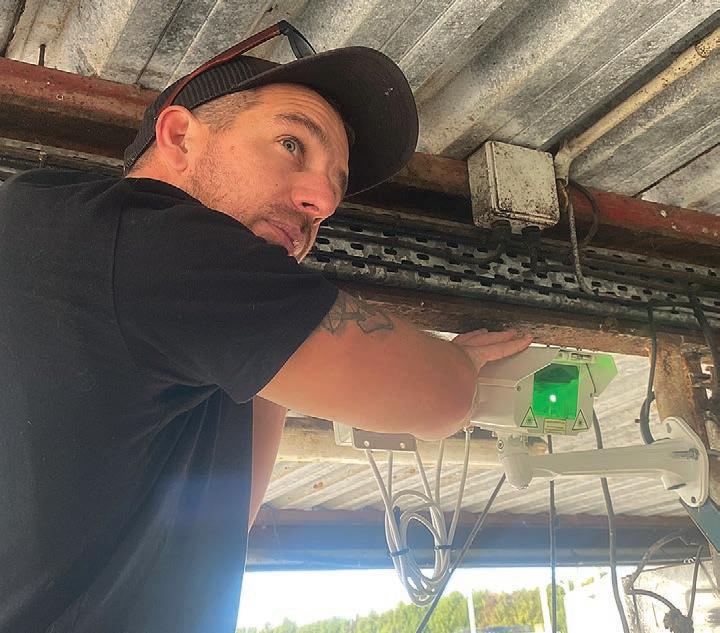
The units utilise different laser patterns for particular applications. Some lasers use a scatter of light whereas others use dots or straight beams.
In buildings with limited headspace the various light patterns ensure that a unit can be used with a controlled beam to suit each particular application.
The company is also developing “a unique LED concentration lens, which will replace the need for lasers. This will be revolutionary for many applications.” n
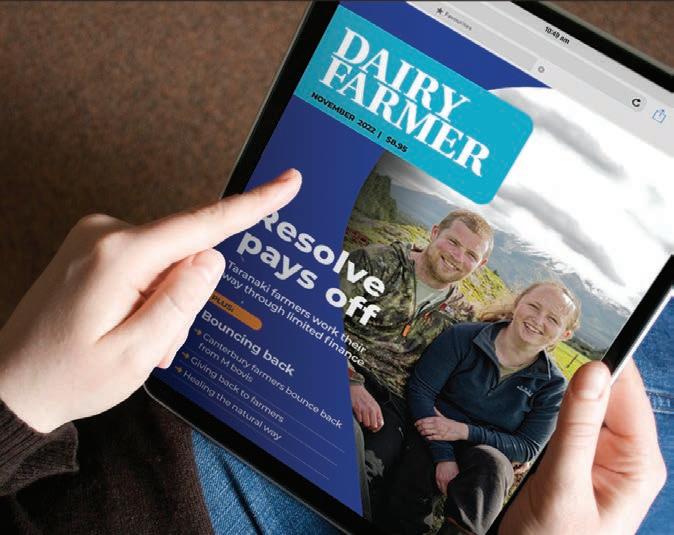




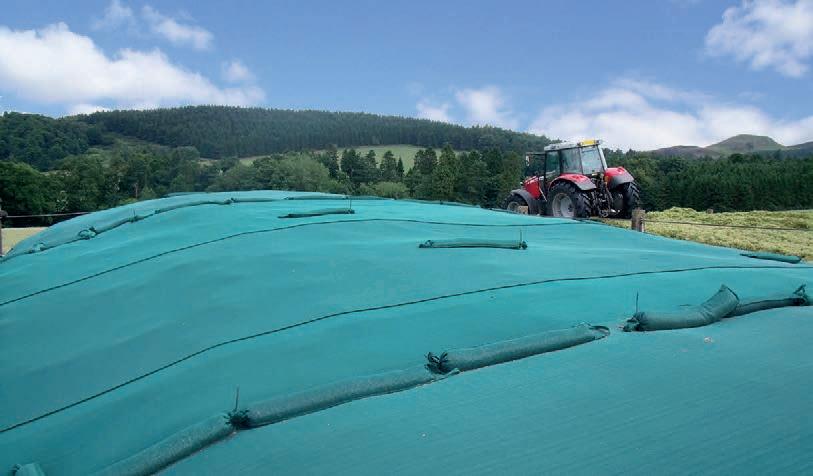




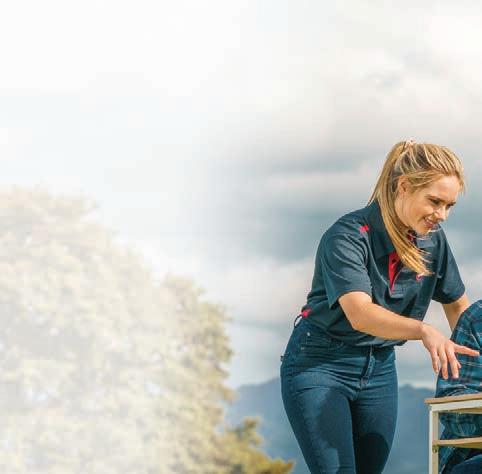




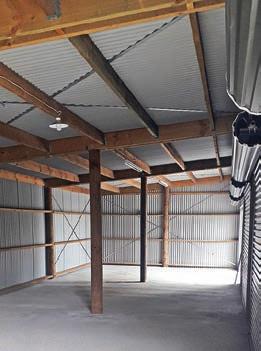
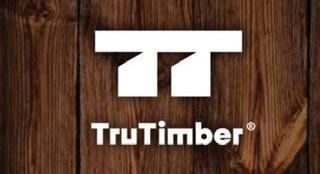



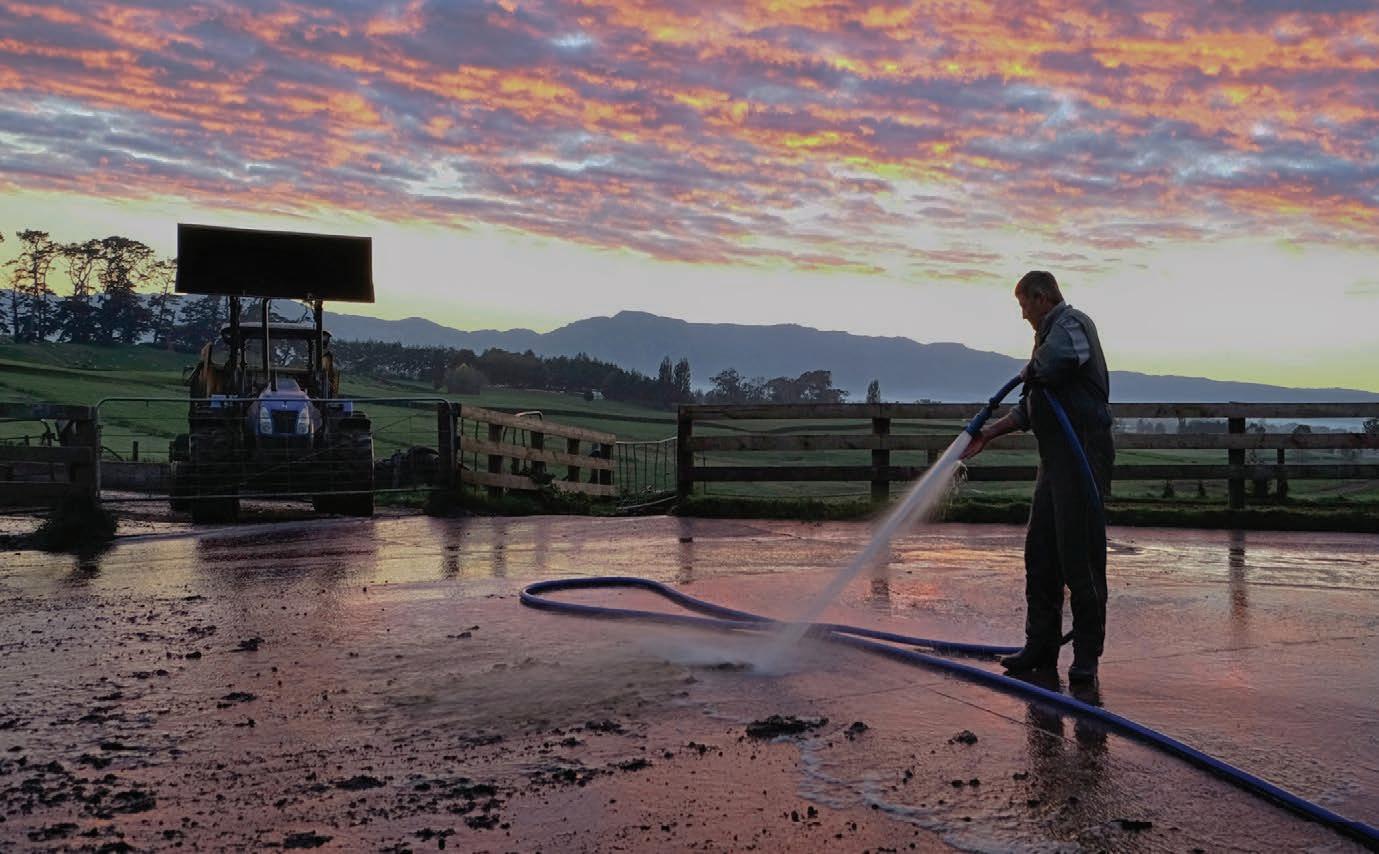







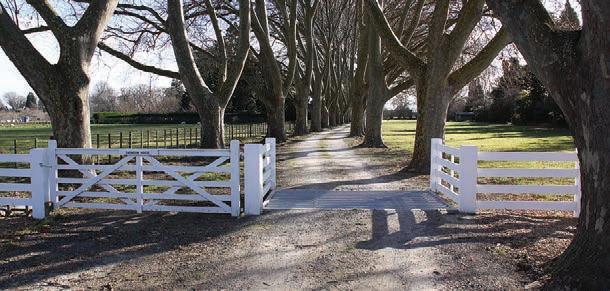














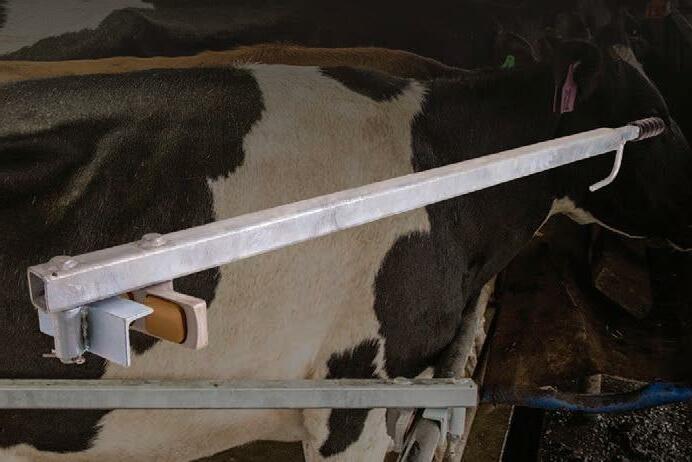


With calving more or less done for most, farmers are now turning their attention to the busy mating season followed by supplementary feed harvesting.
It hasn’t been the best start to the season, with Mother Nature reminding us who is in charge. Winter came back with a bang in early October in the form of a weather bomb that has affected much of New Zealand. Heavy rains and strong winds lashed the country and the deep south experienced snow to low levels. The colder temperatures have led to Fonterra revising its milk collection down.
And in the midst of all that, the government’s release of a 94-page draft document on cutting emissions caused even more discontent. The government has set domestic emissions reduction targets that align with limiting the rise in global warming to 1.5degC. These targets are net-zero emissions for long-lived greenhouse gases by 2050, a 24%47% reduction below 2017 in biogenic methane emissions by 2050, and a 10% reduction below 2017 biogenic methane emissions by 2030. To achieve this, they are proposing measures that could result in sheep and beef being cut by 20% and dairy by 5%.
Research has already shown that Kiwi farmers are the most efficient food producers in the world. AgResearch analysis confirmed that NZ retained its outstanding position in low-emission dairy milk production, with an on-farm
carbon footprint 48% less than the average of 18 countries studied.
The research analysed 55% of global milk production, including major milk producing countries, and found NZ is the most efficient producer at 0.77 kg CO2e per kg FPCM (fat and protein corrected milk) – which is 48% less than the average of the countries studied. The average is 1.47 kg CO2e per kg FPCM.
The government’s draft response to He Waka Eke Noa is now open for consultation and seeks feedback on a farm-level, split-gas levy for pricing agricultural emissions, two options for pricing synthetic nitrogen fertiliser emissions, an interim processor-level levy as a transitional step if the farm-level levy cannot be implemented in time, and recognition for some categories of sequestration in an adjacent contractual system from 2025, with the long-term goal of integration of new vegetation categories into the NZ Emissions Trading Scheme.
So effectively, a new tax that will put the squeeze on everyone at a time when inflation is high and interest rates are rising.
Groundswell has held protests around the country. It says that “this tax will cut food production by up to 20% in some sectors, ripping the heart of out of our rural communities, but barely touch net global emissions as foreign, less-efficient farmers take Kiwi farmers’ place in international markets. “That adds up to an effective subsidy from New Zealanders
to overseas methane emitters.”
DairyNZ says it has serious concerns about the government’s emissions pricing proposal, and the next steps will be discussed with dairy farmers at events that began last month.
DairyNZ chair Jim van der Poel says the changes are unacceptable for farmers and the primary sector.
“There are fundamental shifts from what the sector and its farmers proposed, particularly around governance, pricesetting and sequestration,” Van der Poel said.
“The changes have impacted the balance and equity of achieving emission reductions and pricing, which the whole primary sector worked hard to create.
“It’s crucial now that we actively and collectively raise our concerns with the government over the coming weeks, to help the impacts on farm businesses to be heard.”
So make sure you get along and have your say, this is your future. Submissions close on November 18.
Thank you to Tash Lee Grooby from Morven South Canterbury for this stunning early-morning shot from the shed. Tash and her partner contract-milk 480 cows and have been on same farm for 11 years.
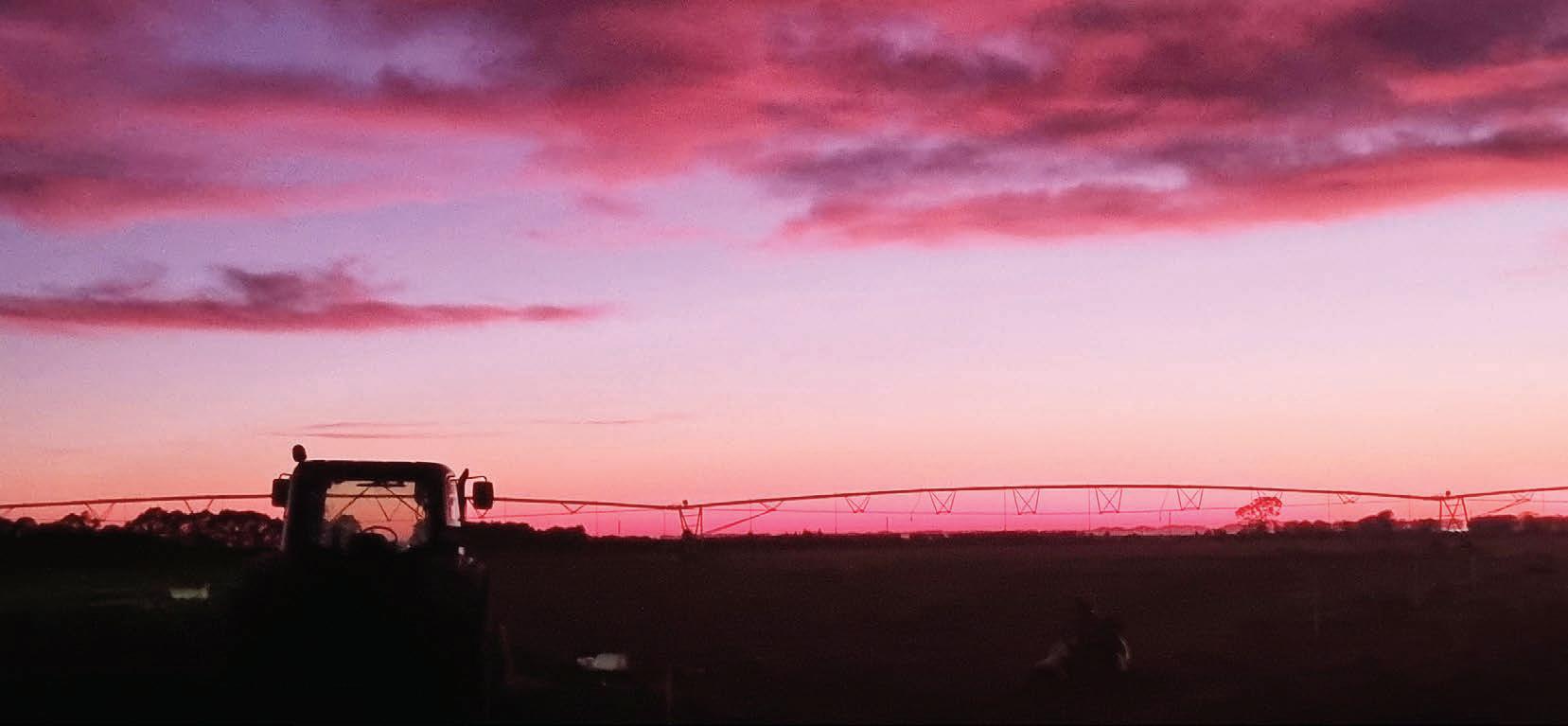
Like us: farmersweekly.co.nz
Follow us: @DairyFarmer15 Read us anywhere: farmersweekly.co.nz
Hitting Your Heifer Targets field day, Karapiro and Hāwera
Growing heifers that go on to meet their full potential when they join the herd can be a challenge. At this field day we will explore the factors that go into producing well-grown heifers. Info at www.smallerherds.co.nz
Wearable Cow Tech field day, South Taranaki
Come along to have a look at a Halter system working on farm and explore a range of other technology options. Join us at Noel and Brenda Boddie’s farm with contract milkers Matthew and Alyssa Barr, for this field day on wearable technology. Info at www.dairyevents.co.nz
Ballance Book Swap and Social Night, North Canterbury
It’s time for a get-together. Come along and join Dairy Women’s Network North Canterbury for a Ballance Agri-Nutrients book swap and social night. Meet other locals and your local Dairy Women’s Network leaders, grab some nibbles and buy a drink.
Take a book, kindly donated by Ballance Agri-Nutrients, and then swap it at our upcoming Christmas event in December. Info at www.dwn.co.nz/events
Ballance Bookswap and Social Night, Taranaki Come and join Dairy Women’s Network Taranaki for the Ballance Book Swap and Social. Ballance Agri-Nutrients have a beautiful range of books to give away, but if you have an old book you’d like to pass on, bring it along. A great way to connect with other members, buy a drink or dessert and grab or swap a book. Now calving is over, we’d love to see you there. Info at www.dwn.co.nz/events
An evening of lifestyle inspiration that’s a bit lighter on the planet. Nic Turner from Mainstream Green is here to help us be sustainable during the festive season.
Join us for delicious grazing platters while Nic talks us through:
• Her journey from ultimate consumer to converted minimalist;
• Why being more mindful of our consumption and our impact is better for our own wellbeing and the wellbeing of the planet; and
• Tips and ideas for gift-giving, gift-wrapping, fashion, and more. Info at www.dwn.co.nz/events
Owl Farm Focus Day, Cambridge Owl Farm is a joint venture between St Peter’s School Cambridge and Lincoln University. Our aim is to demonstrate excellence in farm performance to create a sustainable future. With the help of our trusted industry partners, we share our knowledge with the wider farming industry, and provide opportunities for students to learn more about dairy farming.
Presentation on seasonal results to date. Guest speakers on topical items in the dairy industry.
Info at www.owlfarm.nz/
Achieve success in your contract milking business
Getting ahead of the rest – helping you achieve success in your contract milking business.
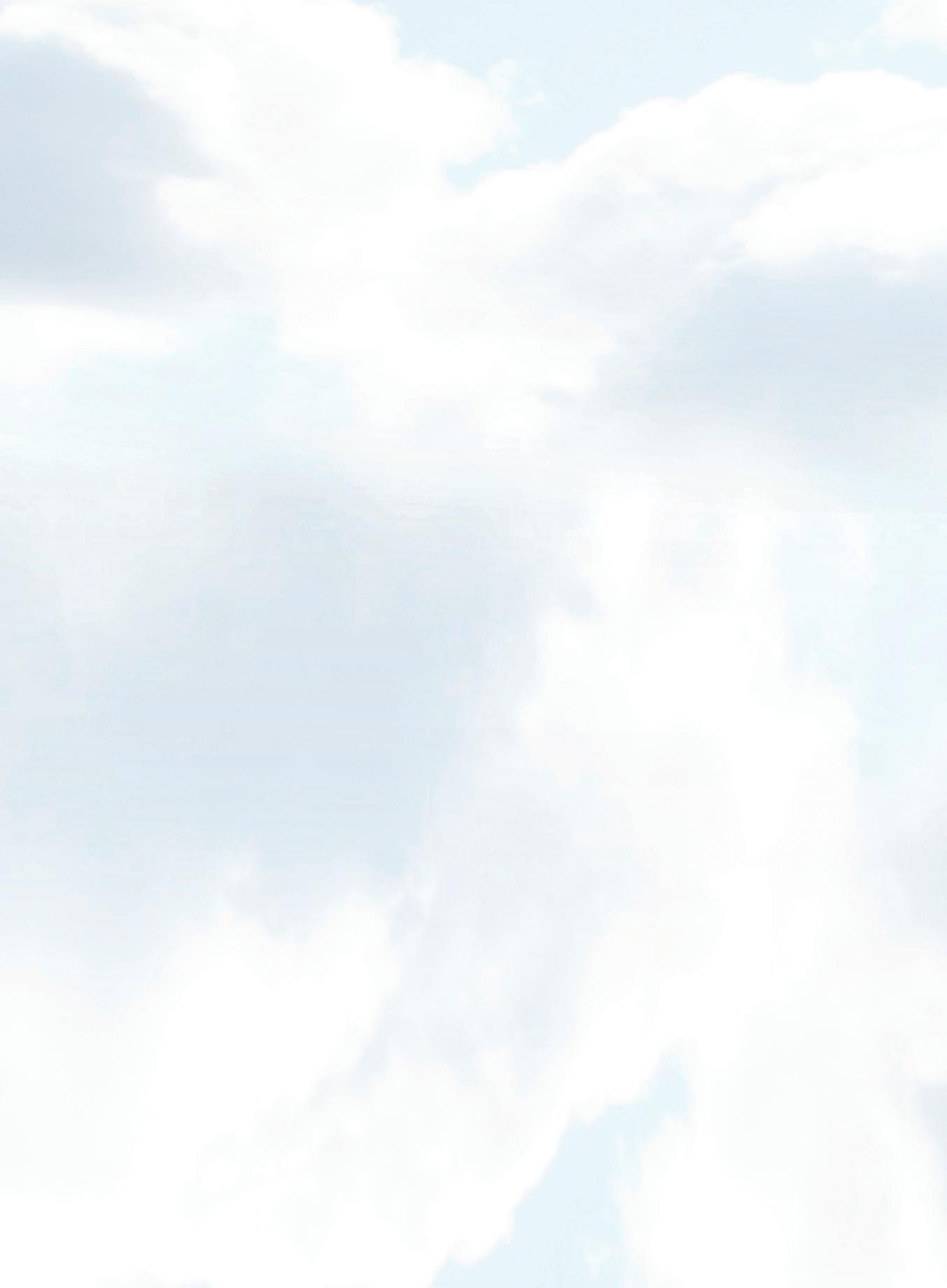
If you are a farm manager, new contract milker or currently contract milking, this workshop is for you.
We want to help you thrive in your current or future business. With guest speakers and farmer speakers sharing their expertise and tips, across four workshops.
Info at www.dairyevents.co.nz
Join us to learn more about the government’s emissions pricing proposal: what it means for farmers, what we think about it, and give us your feedback.
Mid 2022 the Primary Sector Climate Action Partnership, He Waka Eke Noa, submitted their final recommendation on pricing agricultural emissions to the government after two months of consultation with the industry. This was the farm level levy.
After reading the He Waka Eke Noa – farm level levy recommendation, the government took it into account and released its own recommendation for pricing agricultural emissions for public consultation.
The government has made significant changes to the agricultural emissions pricing proposal that the He Waka Eke Noa partnership presented to it earlier this year. We have some serious concerns about these changes, and know that many of our farmers do, too. Join us to understand what the government has recommended, and how this differs from the He Waka Eke Noa farm level levy and NZ Emission trading scheme.
Info at www.dairyevents.co.nz
Proudly brought to you by Benchmark Assurance Wellbeing plan





